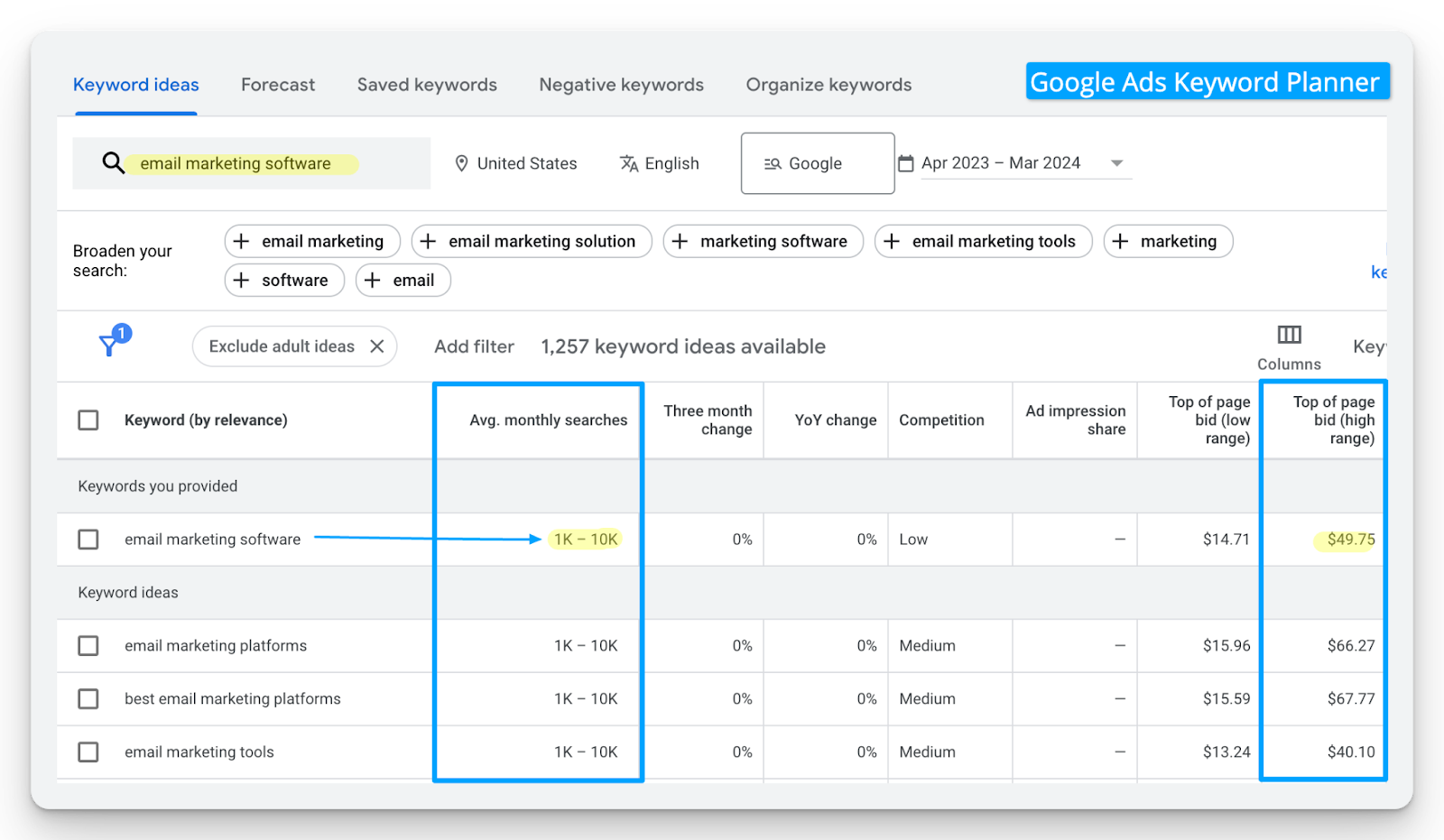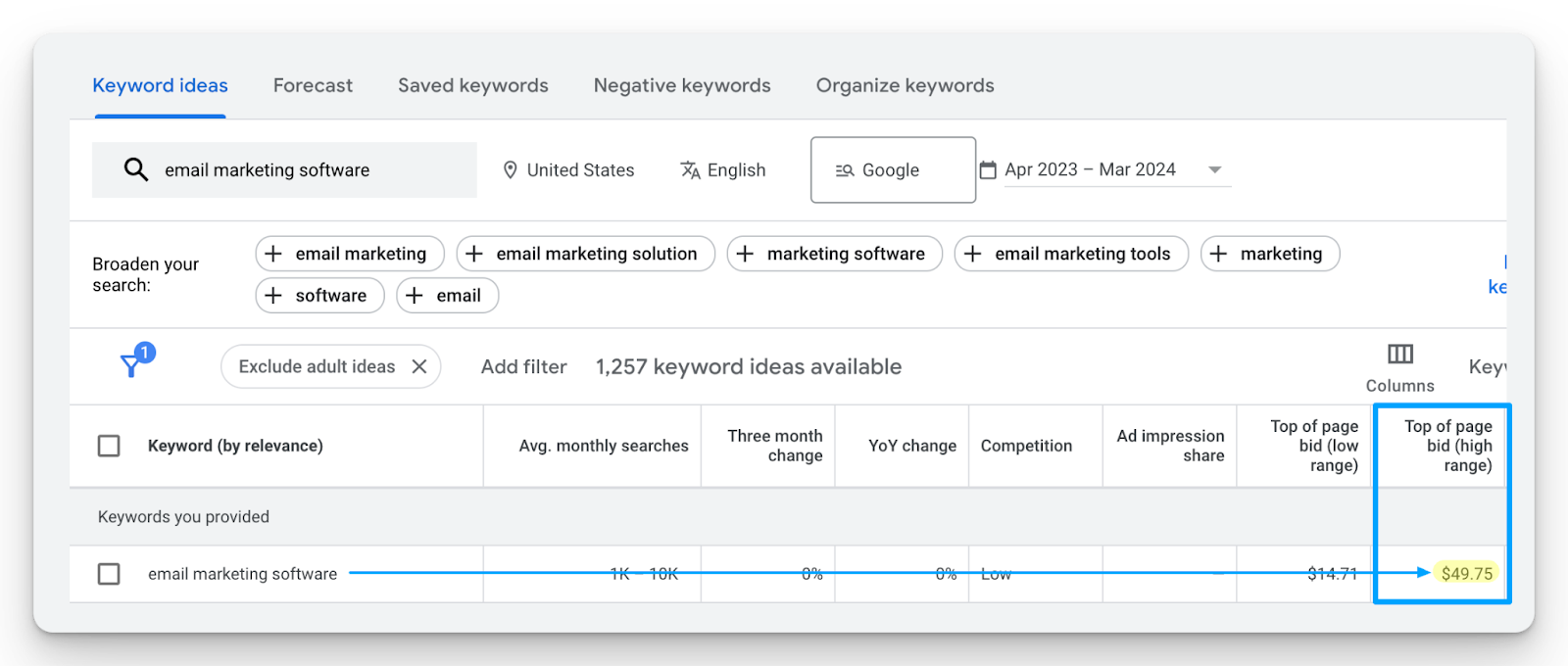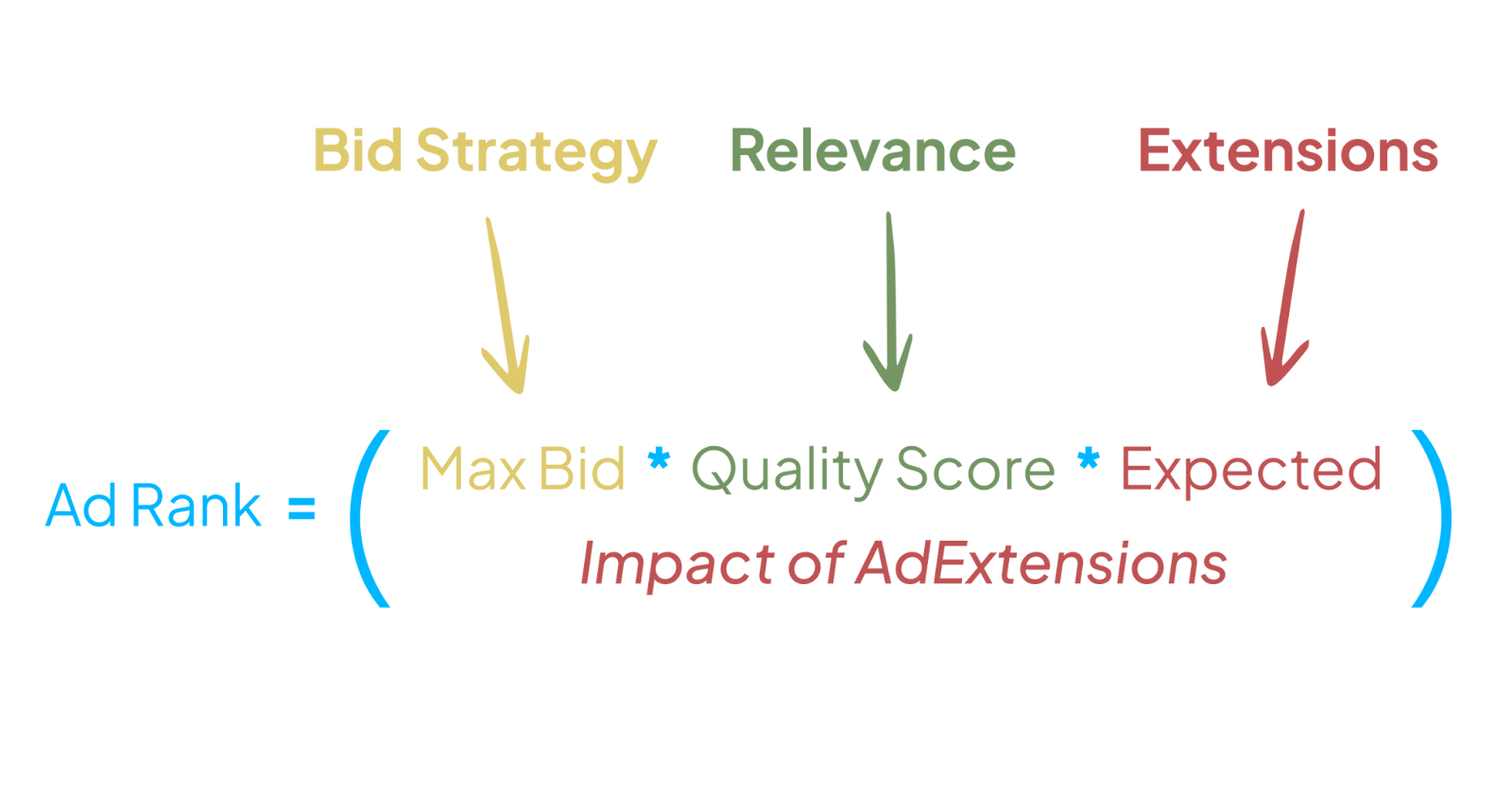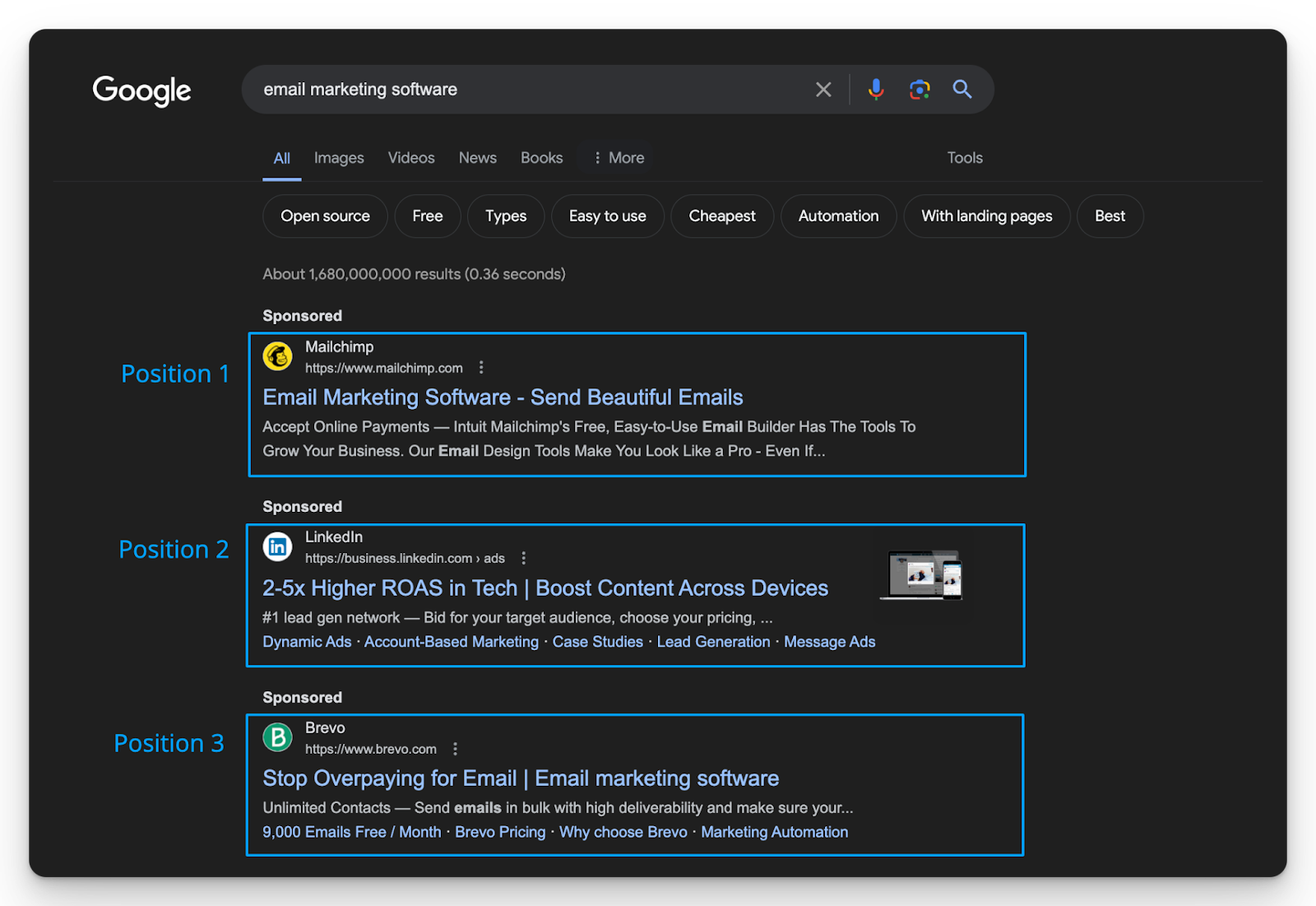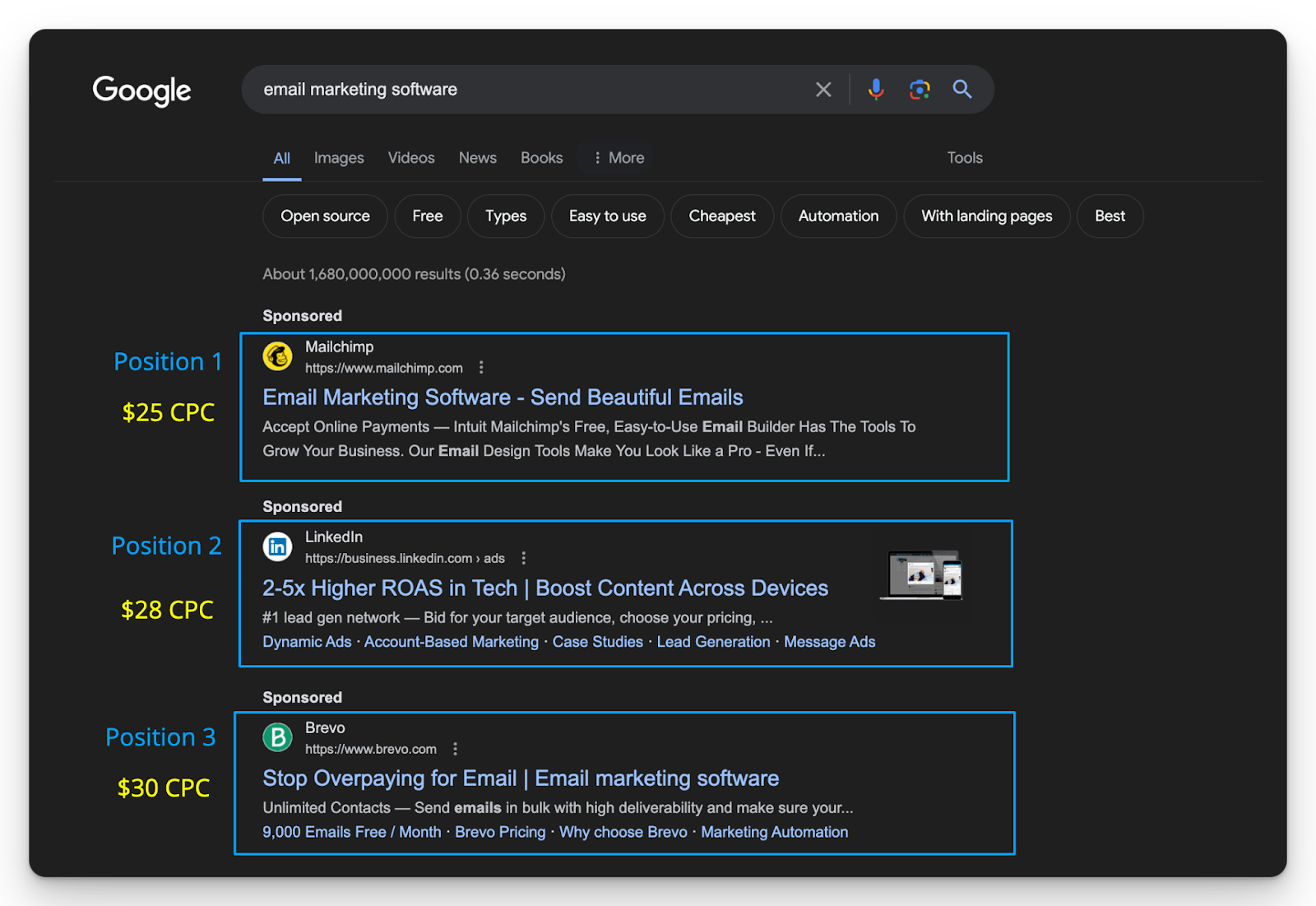
10 Effective Account-Based Marketing Tactics For Modern B2B Marketers
Do you need to find out if ABM is the right approach for you & how you can get the most out of your efforts?
I had the pleasure of interviewing Brandon Alisoglu who’s achieved a 300% increase in demo bookings for B2B companies while maintaining a 50% SQL rate from ABM campaigns.
Here’s Brandon’s top 10 tips & tactics to maximize return on effort (ROE) for your ABM ads.
(In no particular order, they all matter)
TABLE OF CONTENTS
- Tip #1 - Assessing the Suitability of ABM for Your Business
- Tip #2 - Embracing the Long Game in Account-Based Marketing (ABM)
- Tip #3 - Create a Dossier of Information
- Tip #4 - Breaking Content to Audience Segmentation
- Tip #5 - Focusing on Outcomes: The "So What?" Factor in ABM
- Tip #6 - Drilling Into Personas & Messaging
- Tip #7 - A/B Testing Value Propositions
- Tip #8 - Set Aside Time to Ideate
- Tip #9 - Streamlining the Process with Templates
- Tip #10 - Don’t Skip Google
- Conclusion
- Resources for mastering B2B advertising
Tip #1 - Assessing the Suitability of ABM for Your Business
When evaluating ABM for your business, consider the nature of your target accounts and the practicality of a personalized marketing approach.
ABM is particularly effective for targeting large organizations or "whales" where the potential return justifies the extensive effort and resources required for highly tailored campaigns.
Challenges with ABM in Smaller Companies
In smaller companies, the lack of numerous distinct roles and seniority levels may limit the effectiveness of ABM strategies that rely on granular targeting and personalized messaging.
If a company is too small to segment effectively based on these criteria, the impact of a tailored ABM approach may be diminished.
ABM often involves high-ticket offerings and significant investment in marketing resources.
If the target account does not have the financial capacity or the organizational complexity, the return on investment might not be worth it.
Strategic Considerations for ABM
Evaluate potential accounts not just by their immediate size but by their strategic importance and the potential lifetime value they offer.
Consider more generalized targeted advertising strategies for smaller accounts that do not justify a full ABM approach.
These can still be effective by focusing on industry-specific pain points and solutions but do not require the level of customization and operational complexity associated with traditional ABM.
Identifying the Annual Contract Value (ACV) Benchmark
An ACV of around $20,000 is generally seen as a threshold where ABM becomes viable.
This benchmark suggests that the deal size is significant enough to warrant the detailed and personalized marketing efforts required in ABM.
Another practical measure is whether the contract value requires CFO approval.
The involvement of a CFO generally indicates that the deal is substantial enough to require careful consideration and alignment with strategic financial goals.
Tip #2 - Embracing the Long Game in Account-Based Marketing (ABM)
Unlike traditional demand generation tactics that may prioritize immediate results, ABM focuses on building engagement through a more deliberate and personalized approach.
The idea here is to build a meaningful relationship with key accounts.
In the same way, you wouldn't ask for a hand in marriage on the first date, successful B2B marketers shouldn’t ask prospects to talk to sales unless they've had some interaction before.

The Importance of Educating and Engaging
The early stages of ABM should center around education and awareness.
Allow targeted accounts to familiarize themselves with your brand and value propositions.
This foundational phase is important for setting the stage for deeper engagement.
Jumping directly to aggressive sales tactics like pushing for demos with accounts that have minimal interaction with your brand, is less likely to yield positive results.
Instead, nurturing relationships over time fosters trust and increases the likelihood of conversion when the account is ready.
Balancing Immediate Needs with Long-Term Strategy
While the emphasis on the long game is important, we realize the need to meet short-term sales targets is a pressing reality for most B2B marketers.
In such cases, employing a robust account scoring system can help identify which accounts are most ready to engage based on their behaviors such as:
- Website visits (specially high-intent pages)
- Ad engagement
- Email interactions
- Webinar attendees
For accounts that show clear signs of being in-market or closer to the decision stage, tailor your approach to convert these opportunities.
This can involve more direct calls to action, such as personalized demo invitations and running incentivized offers.
If your company is product-led, this would be a good time to offer free trials.
Sample of free trial ad by Plauti:

Tip #3 - Create a Dossier of Information
Understanding your prospects' interests, pain points, and engagement history comprehensively is the key to crafting personalized and effective ABM strategies.
This information equips sales teams with the required data to personalize their outreach effectively and accelerate the sales process.
Building & Targeting Prospect
Compile data on prospect activities, including the specific ads they clicked, pages they visited, or any communications they have sent.
This dossier should act as a dynamic document that sales teams can use to personalize their approaches.
By understanding what content the prospect has engaged with, the sales team can address specific interests or pain points, making their pitches more relevant and compelling.
Marketers can also use this data to launch 1:1 campaigns featuring social proof and objection handling.
If the list of accounts is not large enough for a 1:1 approach, then gather the top 3-5 most common objections that resonate with the majority of the accounts.
You can reduce the overall cost by dynamically excluding any account that has contacted sales.
Implementation Tips for Effective ABM
- Identify in-market accounts by using advanced analytics and account scoring to determine which of your target accounts are actively engaging with your content.
Tools like HubSpot or Marketo can help streamline the process.
- Once these engaged accounts are listed, segment them for targeted campaigns that address their specific stages in the buyer’s journey.
This segmentation allows you to apply more aggressive sales tactics appropriately while continuing to nurture less-ready accounts with educational content.
- Distribute content that educates and engages at various stages of the customer journey.
This tactical approach ensures that when you invite accounts to a demo or free trial they are informed and more likely to be receptive.
Successful ABM is a blend of patience and strategic agility, tailored to meet both the immediate and long-term goals of your business.
Tip #4 - Breaking Content to Audience Segmentation
The purpose of this step is to develop and deliver content that addresses specific pain points and interests identified in your prospect dossiers.
Strategies for Deepening Prospect Engagement
As you gather more data on your prospects' behaviors, such as the ads they click or the pages they visit, use this information to guide them through a personalized buyer's journey.
This involves crafting content that speaks directly to their needs and leading them to web pages that provide further value and deepen their engagement with your brand.
Regularly update and refine your ads to keep them in line with your audience's changing interests and needs.
Creating a Content "Buffet"
Offer a Variety of Content Options.
Imagine setting up a buffet of content options tailored to different tastes and preferences within your target accounts.
By providing a range of topics and formats—from whitepapers and case studies to webinars and interactive tools—you allow prospects to self-select the content that most resonates with them.
Use the insights from observed interactions to refine your understanding of what each prospect cares about.
This personalized approach not only enhances the relevance of your outreach but also increases the likelihood of a prospect's deeper engagement with your content.

Integrating Technology for Efficiency
While managing this level of personalized engagement can become complex, employing an ABM platform can streamline the process.
These platforms can help organize and automate content delivery based on user behavior, keeping track of interactions across different channels to maintain a cohesive and personalized marketing approach.
Pro tip:
Before fully investing in an expensive ABM tech stack, validate your strategy with simpler tools or minimal setups to prove its effectiveness.
A simple way is to use LinkedIn's demographic reporting to see which companies have been exposed to impressions, and which ones are actually engaging.
You can take it a step further and leverage a third-party data connector like data slayer to pull the demographic data from LinkedIn through API.
Tip #5 - Focusing on Outcomes: The "So What?" Factor in ABM
A critical aspect of effective ABM is ensuring that every piece of data, every content interaction, and every campaign has a clear and compelling answer to the question: "So what?"
Every action should educate, nurture, or capture leads, to bring you closer to revenue.

The Importance of Outcome-Based Messaging
In ABM, it's not enough to highlight the features of your product or the hours it can save a potential client’s team.
The key is to articulate what these benefits mean in the context of the customer’s specific business challenges and goals.
When discussing a product feature, such as "saves your engineering team 20 hours a week," it's essential to connect this benefit to tangible business outcomes.
For example, what does saving 20 hours a week mean for the company?
Could it lead to faster project completions, cost savings, or better resource allocation?
These outcomes are what will truly capture the interest of decision-makers.
By consistently focusing on the "so what?" of your actions and messaging, you can lift your ABM efforts from functional to transformational.
Pro-tip:
Establish Leading Indicators to Measure ABM Progress:
By establishing clear leading indicators across your marketing funnel, you can quantify progress and tie every action back to tangible business outcomes.
From initial awareness through engagement to conversion, each stage can be monitored and analyzed to ensure marketing efforts move potential clients closer to a sale.
These indicators provide a roadmap that justifies the investment by showing how specific activities contribute to moving accounts through the sales pipeline.
If you want to learn more about creating leading and lagging indicators along with actionable free templates check out the AdConversion Paid Media Program course; Module 2, lesson 1.

Tip #6 - Drilling Into Personas & Messaging
Within any given company, different levels of management and seniority have distinct priorities and challenges.
For example, C-suite executives might focus on strategic growth and scalability, directors on operational efficiency, and managers on tactical execution.
Tailoring your messaging to address these specific concerns can dramatically increase the relevance and impact of your communications.
Beyond role-based customization, consider the particular needs and pain points of the industry or vertical your target accounts might operate within.
Strategies for Effective A/B Testing
Implement continuous A/B testing across your campaigns to determine which messages resonate best with each persona.
Segment your target audience by role and seniority, and tailor your messages accordingly.
For example, test different value propositions with managers versus C-suite executives to determine which messages drive more engagement or conversions from each group.
Understand that the preferences and behaviors of your audience can evolve, and your ABM strategy should be agile enough to adapt to these changes.
Tip #7 - A/B Testing Value Propositions
By testing two to three variations of each message, you can discover appeals and incentives that resonate with distinct groups within the same role and seniority level.
In cases where the target company might not be large enough to segment by job titles or seniority due to LinkedIn’s filtering limitations, marketers need to think creatively about how to approach personalization and segmentation.
Alternative Segmentation Strategies:
- Use Broad Segments:
Instead of job titles, consider using job function and seniority or even adding member skills into the mix.
- Focus on Common Pain Points:
Leverage the common challenges or objectives identified in smaller organizations.
For example, if most employees are likely involved in decision-making due to the company's size, tailor messages that address broad business benefits that resonate across multiple roles.
As discussed earlier, knowing the top objections by vertical can guide the creation of content and ads that preemptively address concerns.
This is particularly useful when precise job title segmentation is not feasible.
Tip #8 - Set Aside Time to Ideate
In the fast-paced environment of account-based marketing, it's imperative to carve out dedicated time for creative thinking and experimentation.
By blocking out time on your calendar, preferably during quieter hours like Friday afternoons, you ensure that you have the space to think deeply and creatively about your ABM strategies.
Regular ideation sessions allow you to review current insights and performance data, enabling you to develop new approaches and refine existing ones.

Pro tip:
Leverage Experimentation and Documentation:
Incorporate a structured approach to experimentation.
Try out new ideas on a small scale to assess their effectiveness before rolling them out broadly.
Keep detailed records of your experiments, including:
- Hypotheses
- Execution details
- Outcomes.
This documentation enables you to capitalize on effective strategies and avoid past mistakes.
Tip #9 - Streamlining the Process with Templates
Keeping detailed and organized documentation of ABM activities, such as experiments, outcomes, and insights will save you lots of time & effort in the long run.
It can be as simple as using Google Docs with structured headings and a table of contents.
Consistent documentation helps in creating a reliable record that can be referenced in reports and strategy meetings.
Leveraging Design Templates
Design templates allow marketers to quickly generate new versions of ads or content without starting from scratch each time.
By standardizing the design elements, teams can focus on tweaking the messaging and content to better align with the target audience’s evolving preferences.
Using templates also ensures that all materials produced are aligned with the brand’s visual identity and messaging guidelines.
Effective Use of Templates and Documentation
Develop a range of design templates for different types of content and ads.
This library should include templates for social media posts, email campaigns, and other marketing materials that are frequently used in ABM campaigns.
Regularly update the documents with the latest results from A/B tests, data analysis insights, and feedback from sales and marketing teams to maintain accuracy and relevance.
Confirm that all team members are trained on how to use the chosen documentation and templates effectively.
With the design templates in place, focus on iterating on the creatives frequently.
Especially in smaller audience segments where ad fatigue can set in quickly.
Tip #10 - Don’t Skip Google
While (ABM) often focuses on direct and personalized communication channels like LinkedIn, incorporating Google Ads into your Demand Gen strategy can heavily reduce the overall cost per acquisition (CPA).
The Strategic Use of Google Ads
Google Ads allows you to address specific queries and pain points that your prospects are actively searching for.
By focusing on these queries, you can position your company as a solution provider right at the moment of need, effectively answering potential customers’ questions through targeted ads.
Often, niche or less competitive keywords related to specific industry questions or problems can be much cheaper than more general, high-intent keywords.
For example, targeting a specific industry debate or a lesser-known feature comparison can capture relevant traffic at a significantly lower cost.
This, not only increases brand awareness but also positions your company as an authoritative and helpful resource.
Creating content that addresses these queries and promoting it through Google Ads can drive highly targeted traffic to your website, increasing the chances of conversion.
Practical Tips for Implementing Google Ads
- Work with your sales and customer service teams to pinpoint the questions and topics that commonly arise during the sales process.
- Use these insights to guide your keyword and content strategy for Google Ads.
Develop content that answers these questions comprehensively.
This could be in the form of blog posts, FAQs, or educational articles.
- Use the identified keywords to set up Google Ads campaigns.
Start with a lower budget to test the effectiveness of your keywords and ads.
Monitor the performance and adjust your strategy based on the results.

Conclusion:
In this article, we discussed the significance of Account-Based Marketing (ABM) strategies through 10 practical tips and tactics to get the most out of your marketing efforts.
We explored the value of a long-term engagement strategy, emphasizing the need to build relationships through educational content and gradual interactions, rather than taking a direct approach.
Effective ABM involves understanding target accounts' specific needs and behaviors, employing analytics for better targeting, and continuously iterating on creative content to maintain relevance and combat ad fatigue.
Bookmark this blog as your comprehensive guide for your next ABM efforts to make sure your strategies align with the overall company goal.
If you’d like to reach out or get more weekly tips, please connect with Brandon via Linkedin.
Resources for mastering B2B advertising
If you’re serious about mastering B2B advertising then you definitely need to join 1,000+ B2B marketers leveling up their paid advertising skill sets in AdConversion.
Here’s 4 reasons why you should consider joining. Every one of our on-demand courses are:
✅ 100% free access.
✅ Taught by vetted industry experts.
✅ Have workbooks, resources, and templates.
✅ Less than 10 minutes per lesson.
We believe every marketer should know how to scale paid ads so they can:
- Scale their ideas
- Level up their careers
- Make a positive impact
Click Here to Join 1,000+ B2B Marketers Today and start leveling up your advertising skill set.
Takes < 90 seconds to sign up (seriously we timed it 😂)
People Also Ask
How can I effectively measure the success of my ABM campaigns?
Utilize key performance indicators (KPIs) such as engagement levels with target accounts, conversion rates, deal velocity, and revenue growth from those accounts. Implementing a robust analytics framework will help in tracking these metrics accurately.
What are the common challenges in aligning sales and marketing teams for ABM, and how can they be overcome?
Challenges include differing objectives, communication barriers, and data silos. Overcome these by establishing shared goals, fostering regular interdepartmental meetings, and utilizing integrated CRM systems to ensure both teams have access to the same account information.
How can I personalize content effectively for different stakeholders within a target account?
Develop detailed personas for each stakeholder role, understanding their specific pain points and objectives. Tailor your messaging to address these unique concerns, ensuring relevance and resonance with each individual.
What role does technology play in scaling ABM efforts, and which tools are essential?
Technology facilitates the automation and scaling of ABM strategies. Essential tools include CRM systems for managing account information, marketing automation platforms for campaign execution, and analytics tools for measuring performance.
How can I ensure data quality and accuracy in my ABM initiatives?
Regularly update and cleanse your data to maintain its accuracy. Implement data governance policies and utilize data enrichment services to fill in any gaps, ensuring your ABM efforts are based on reliable information.

Heading 1
Heading 2
Heading 3
Heading 4
Heading 5
Heading 6
Lorem ipsum dolor sit amet, consectetur adipiscing elit, sed do eiusmod tempor incididunt ut labore et dolore magna aliqua. Ut enim ad minim veniam, quis nostrud exercitation ullamco laboris nisi ut aliquip ex ea commodo consequat. Duis aute irure dolor in reprehenderit in voluptate velit esse cillum dolore eu fugiat nulla pariatur.
Block quote
Ordered list
- Item 1
- Item 2
- Item 3
Unordered list
- Item A
- Item B
- Item C
Bold text
Emphasis
Superscript
Subscript


Heading
Heading 1
Heading 2
Heading 3
Heading 4
Heading 5
Heading 6
Lorem ipsum dolor sit amet, consectetur adipiscing elit, sed do eiusmod tempor incididunt ut labore et dolore magna aliqua. Ut enim ad minim veniam, quis nostrud exercitation ullamco laboris nisi ut aliquip ex ea commodo consequat. Duis aute irure dolor in reprehenderit in voluptate velit esse cillum dolore eu fugiat nulla pariatur.
Block quote
Ordered list
- Item 1
- Item 2
- Item 3
Unordered list
- Item A
- Item B
- Item C
Bold text
Emphasis
Superscript
Subscript


Heading
Heading 1
Heading 2
Heading 3
Heading 4
Heading 5
Heading 6
Lorem ipsum dolor sit amet, consectetur adipiscing elit, sed do eiusmod tempor incididunt ut labore et dolore magna aliqua. Ut enim ad minim veniam, quis nostrud exercitation ullamco laboris nisi ut aliquip ex ea commodo consequat. Duis aute irure dolor in reprehenderit in voluptate velit esse cillum dolore eu fugiat nulla pariatur.
Block quote
Ordered list
- Item 1
- Item 2
- Item 3
Unordered list
- Item A
- Item B
- Item C
Bold text
Emphasis
Superscript
Subscript


Heading
Heading 1
Heading 2
Heading 3
Heading 4
Heading 5
Heading 6
Lorem ipsum dolor sit amet, consectetur adipiscing elit, sed do eiusmod tempor incididunt ut labore et dolore magna aliqua. Ut enim ad minim veniam, quis nostrud exercitation ullamco laboris nisi ut aliquip ex ea commodo consequat. Duis aute irure dolor in reprehenderit in voluptate velit esse cillum dolore eu fugiat nulla pariatur.
Block quote
Ordered list
- Item 1
- Item 2
- Item 3
Unordered list
- Item A
- Item B
- Item C
Bold text
Emphasis
Superscript
Subscript


Heading
Heading 1
Heading 2
Heading 3
Heading 4
Heading 5
Heading 6
Lorem ipsum dolor sit amet, consectetur adipiscing elit, sed do eiusmod tempor incididunt ut labore et dolore magna aliqua. Ut enim ad minim veniam, quis nostrud exercitation ullamco laboris nisi ut aliquip ex ea commodo consequat. Duis aute irure dolor in reprehenderit in voluptate velit esse cillum dolore eu fugiat nulla pariatur.
Block quote
Ordered list
- Item 1
- Item 2
- Item 3
Unordered list
- Item A
- Item B
- Item C
Bold text
Emphasis
Superscript
Subscript


Heading
Heading 1
Heading 2
Heading 3
Heading 4
Heading 5
Heading 6
Lorem ipsum dolor sit amet, consectetur adipiscing elit, sed do eiusmod tempor incididunt ut labore et dolore magna aliqua. Ut enim ad minim veniam, quis nostrud exercitation ullamco laboris nisi ut aliquip ex ea commodo consequat. Duis aute irure dolor in reprehenderit in voluptate velit esse cillum dolore eu fugiat nulla pariatur.
Block quote
Ordered list
- Item 1
- Item 2
- Item 3
Unordered list
- Item A
- Item B
- Item C
Bold text
Emphasis
Superscript
Subscript


Heading
Heading 1
Heading 2
Heading 3
Heading 4
Heading 5
Heading 6
Lorem ipsum dolor sit amet, consectetur adipiscing elit, sed do eiusmod tempor incididunt ut labore et dolore magna aliqua. Ut enim ad minim veniam, quis nostrud exercitation ullamco laboris nisi ut aliquip ex ea commodo consequat. Duis aute irure dolor in reprehenderit in voluptate velit esse cillum dolore eu fugiat nulla pariatur.
Block quote
Ordered list
- Item 1
- Item 2
- Item 3
Unordered list
- Item A
- Item B
- Item C
Bold text
Emphasis
Superscript
Subscript


Heading
Heading 1
Heading 2
Heading 3
Heading 4
Heading 5
Heading 6
Lorem ipsum dolor sit amet, consectetur adipiscing elit, sed do eiusmod tempor incididunt ut labore et dolore magna aliqua. Ut enim ad minim veniam, quis nostrud exercitation ullamco laboris nisi ut aliquip ex ea commodo consequat. Duis aute irure dolor in reprehenderit in voluptate velit esse cillum dolore eu fugiat nulla pariatur.
Block quote
Ordered list
- Item 1
- Item 2
- Item 3
Unordered list
- Item A
- Item B
- Item C
Bold text
Emphasis
Superscript
Subscript


Heading
Heading 1
Heading 2
Heading 3
Heading 4
Heading 5
Heading 6
Lorem ipsum dolor sit amet, consectetur adipiscing elit, sed do eiusmod tempor incididunt ut labore et dolore magna aliqua. Ut enim ad minim veniam, quis nostrud exercitation ullamco laboris nisi ut aliquip ex ea commodo consequat. Duis aute irure dolor in reprehenderit in voluptate velit esse cillum dolore eu fugiat nulla pariatur.
Block quote
Ordered list
- Item 1
- Item 2
- Item 3
Unordered list
- Item A
- Item B
- Item C
Bold text
Emphasis
Superscript
Subscript


Heading
Heading 1
Heading 2
Heading 3
Heading 4
Heading 5
Heading 6
Lorem ipsum dolor sit amet, consectetur adipiscing elit, sed do eiusmod tempor incididunt ut labore et dolore magna aliqua. Ut enim ad minim veniam, quis nostrud exercitation ullamco laboris nisi ut aliquip ex ea commodo consequat. Duis aute irure dolor in reprehenderit in voluptate velit esse cillum dolore eu fugiat nulla pariatur.
Block quote
Ordered list
- Item 1
- Item 2
- Item 3
Unordered list
- Item A
- Item B
- Item C
Bold text
Emphasis
Superscript
Subscript


Heading
Heading 1
Heading 2
Heading 3
Heading 4
Heading 5
Heading 6
Lorem ipsum dolor sit amet, consectetur adipiscing elit, sed do eiusmod tempor incididunt ut labore et dolore magna aliqua. Ut enim ad minim veniam, quis nostrud exercitation ullamco laboris nisi ut aliquip ex ea commodo consequat. Duis aute irure dolor in reprehenderit in voluptate velit esse cillum dolore eu fugiat nulla pariatur.
Block quote
Ordered list
- Item 1
- Item 2
- Item 3
Unordered list
- Item A
- Item B
- Item C
Bold text
Emphasis
Superscript
Subscript


Heading
Heading 1
Heading 2
Heading 3
Heading 4
Heading 5
Heading 6
Lorem ipsum dolor sit amet, consectetur adipiscing elit, sed do eiusmod tempor incididunt ut labore et dolore magna aliqua. Ut enim ad minim veniam, quis nostrud exercitation ullamco laboris nisi ut aliquip ex ea commodo consequat. Duis aute irure dolor in reprehenderit in voluptate velit esse cillum dolore eu fugiat nulla pariatur.
Block quote
Ordered list
- Item 1
- Item 2
- Item 3
Unordered list
- Item A
- Item B
- Item C
Bold text
Emphasis
Superscript
Subscript


Heading
Heading 1
Heading 2
Heading 3
Heading 4
Heading 5
Heading 6
Lorem ipsum dolor sit amet, consectetur adipiscing elit, sed do eiusmod tempor incididunt ut labore et dolore magna aliqua. Ut enim ad minim veniam, quis nostrud exercitation ullamco laboris nisi ut aliquip ex ea commodo consequat. Duis aute irure dolor in reprehenderit in voluptate velit esse cillum dolore eu fugiat nulla pariatur.
Block quote
Ordered list
- Item 1
- Item 2
- Item 3
Unordered list
- Item A
- Item B
- Item C
Bold text
Emphasis
Superscript
Subscript


Heading
Heading 1
Heading 2
Heading 3
Heading 4
Heading 5
Heading 6
Lorem ipsum dolor sit amet, consectetur adipiscing elit, sed do eiusmod tempor incididunt ut labore et dolore magna aliqua. Ut enim ad minim veniam, quis nostrud exercitation ullamco laboris nisi ut aliquip ex ea commodo consequat. Duis aute irure dolor in reprehenderit in voluptate velit esse cillum dolore eu fugiat nulla pariatur.
Block quote
Ordered list
- Item 1
- Item 2
- Item 3
Unordered list
- Item A
- Item B
- Item C
Bold text
Emphasis
Superscript
Subscript


Heading
Heading 1
Heading 2
Heading 3
Heading 4
Heading 5
Heading 6
Lorem ipsum dolor sit amet, consectetur adipiscing elit, sed do eiusmod tempor incididunt ut labore et dolore magna aliqua. Ut enim ad minim veniam, quis nostrud exercitation ullamco laboris nisi ut aliquip ex ea commodo consequat. Duis aute irure dolor in reprehenderit in voluptate velit esse cillum dolore eu fugiat nulla pariatur.
Block quote
Ordered list
- Item 1
- Item 2
- Item 3
Unordered list
- Item A
- Item B
- Item C
Bold text
Emphasis
Superscript
Subscript


Heading
Heading 1
Heading 2
Heading 3
Heading 4
Heading 5
Heading 6
Lorem ipsum dolor sit amet, consectetur adipiscing elit, sed do eiusmod tempor incididunt ut labore et dolore magna aliqua. Ut enim ad minim veniam, quis nostrud exercitation ullamco laboris nisi ut aliquip ex ea commodo consequat. Duis aute irure dolor in reprehenderit in voluptate velit esse cillum dolore eu fugiat nulla pariatur.
Block quote
Ordered list
- Item 1
- Item 2
- Item 3
Unordered list
- Item A
- Item B
- Item C
Bold text
Emphasis
Superscript
Subscript


Heading
Heading 1
Heading 2
Heading 3
Heading 4
Heading 5
Heading 6
Lorem ipsum dolor sit amet, consectetur adipiscing elit, sed do eiusmod tempor incididunt ut labore et dolore magna aliqua. Ut enim ad minim veniam, quis nostrud exercitation ullamco laboris nisi ut aliquip ex ea commodo consequat. Duis aute irure dolor in reprehenderit in voluptate velit esse cillum dolore eu fugiat nulla pariatur.
Block quote
Ordered list
- Item 1
- Item 2
- Item 3
Unordered list
- Item A
- Item B
- Item C
Bold text
Emphasis
Superscript
Subscript


Heading
Heading 1
Heading 2
Heading 3
Heading 4
Heading 5
Heading 6
Lorem ipsum dolor sit amet, consectetur adipiscing elit, sed do eiusmod tempor incididunt ut labore et dolore magna aliqua. Ut enim ad minim veniam, quis nostrud exercitation ullamco laboris nisi ut aliquip ex ea commodo consequat. Duis aute irure dolor in reprehenderit in voluptate velit esse cillum dolore eu fugiat nulla pariatur.
Block quote
Ordered list
- Item 1
- Item 2
- Item 3
Unordered list
- Item A
- Item B
- Item C
Bold text
Emphasis
Superscript
Subscript


Heading
Heading 1
Heading 2
Heading 3
Heading 4
Heading 5
Heading 6
Lorem ipsum dolor sit amet, consectetur adipiscing elit, sed do eiusmod tempor incididunt ut labore et dolore magna aliqua. Ut enim ad minim veniam, quis nostrud exercitation ullamco laboris nisi ut aliquip ex ea commodo consequat. Duis aute irure dolor in reprehenderit in voluptate velit esse cillum dolore eu fugiat nulla pariatur.
Block quote
Ordered list
- Item 1
- Item 2
- Item 3
Unordered list
- Item A
- Item B
- Item C
Bold text
Emphasis
Superscript
Subscript


Heading
Heading 1
Heading 2
Heading 3
Heading 4
Heading 5
Heading 6
Lorem ipsum dolor sit amet, consectetur adipiscing elit, sed do eiusmod tempor incididunt ut labore et dolore magna aliqua. Ut enim ad minim veniam, quis nostrud exercitation ullamco laboris nisi ut aliquip ex ea commodo consequat. Duis aute irure dolor in reprehenderit in voluptate velit esse cillum dolore eu fugiat nulla pariatur.
Block quote
Ordered list
- Item 1
- Item 2
- Item 3
Unordered list
- Item A
- Item B
- Item C
Bold text
Emphasis
Superscript
Subscript


Heading
Other Articles You May Enjoy.

B2B Advertising in 2024: The Definitive Guide
Today I’m going to give you a crash course in B2B advertising.
In this comprehensive guide I’ll cover:
- What is B2B advertising?
- 7 ways B2B differs from B2C
- 20 B2B Terms and Metrics you need to know
- Top 3 B2B Revenue Models
- B2B ad examples by revenue model
- How to create a B2B advertising strategy
- The Five Stages Model
- The Best B2B Ad Channels
- Advice from 20 B2B Advertising Experts
So if you need to get up-to-speed on B2B as quickly as possible, you’ll love this guide.
Let’s get started 🔥
What Is Business-to-Business Advertising?
B2B advertising is the process of any paid marketing efforts directed toward influencing multiple individuals within a company for a purchase decision (known as a buying committee) vs a single consumer.
7 Differences between B2B and B2C Advertising:
- Longer sales cycles (3 - 36 months)
- Larger average deal sizes (< $1,000 - $250,000+)
- More stakeholders involved in the purchase decision (ex: c-suite, finance)
- Focus on impacting the entire buyer's journey not just the first conversion (unlike B2C).
- Smaller audiences (< 300,000) with a focus on reaching the right person and company vs B2C with broad audiences ( > 300,000) as more people can purchase your product.
- B2B requires strategic alignment between marketing and sales as you’re joining forces (inbound and outbound) to win accounts.
- B2B supports multiple revenue models, the big three being; product-led, sales-led, and hybrid. Whereas e-commerce is solely product-led.
Check out more examples in the article: B2B vs B2C Advertising: 8 Differences & Examples You Need To Know.
20 B2B Terms and Metrics you Need to Know
One of the first things you realize when you get into B2B is how much jargon there is! MQL, SQL, ACV, ARR, and the list goes on!
In order to make sure you understand the language, here’s 20 B2B terms and metrics you need to know:
Unfortunately there are many more terms you’ll need throughout your B2B career 😂 and every company creates their own (it’s a constant struggle) but these 20 will give you a solid foundation. For a great list of b2b terms check out our B2B Advertising Glossary.
Top 3 B2B Revenue Models
If you’re working in B2B there are three common revenue models you’ll likely work with.
If your job is to promote this organization, understanding the revenue model is key as it will change everything from how you approach your strategy, the offers you choose, channels, and more.

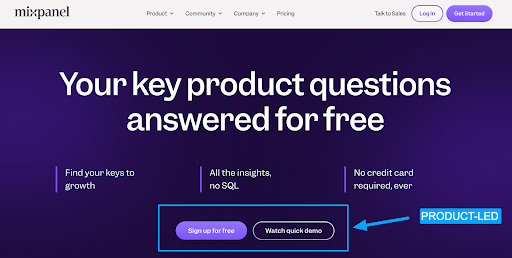

B2B Ad Examples by Revenue Model:
Sales Led
Product Led
How to build a full-funnel B2B Advertising Strategy
Now that you know how B2B differs from B2C.
How do you build a full-funnel B2B advertising strategy?
Full-funnel refers to building a strategy that covers all touch points along the customer journey.
This means advertising to individuals who are (e.g. Eugene's Schwartz Stages of Awareness):
- Unaware = have no clue they even have a problem in the first place (ex: blissfully mismanaging customer relationships)
- Problem Aware = know they have a problem but are not sure how to solve it (ex: realize managing customer relationships is important but don't know how).
- Solution Aware = need help deciding on the right solution (ex: should I use Google Sheets, a filing cabinet 😂 or a CRM?).
- Product Aware = know of your brand/product but not sure if you're the best option (ex: comparing CRM software; Salesforce vs HubSpot vs Pipedrive).
- Offer Aware = know of your brand and exactly how you can help but need some nudging (ex: pricing discounts, better contract terms, customer references).
- Most Aware = Existing customers, familiar with your brand and working with you (ex: referral program).
Understanding your prospects' stage of awareness allows you to create messaging, and offers that better resonate with where they are in the customer journey.
It helps to have a model (think of it like a map) to make complicated topics simple.
We’re going to use The Five Stages model covered in our course Building a Paid Media Program.
Here’s how it works:
Based on the stage; the outcome, awareness level, offers, tactics, and KPIs differ.
- Outcome = the end goal you're trying to achieve in each stage.
- Awareness = the familiarity level of your brand/product/solution.
- Offers = what you're providing your target audience in each stage.
- Tactics = how you're going to actually execute your strategy per stage.
- KPIs = how you're going to measure success in each stage.
Let's dive into examples for each stage so you really understand!
The Five Stages Model
Stage 1: Create
Stage 2: Capture
Stage 3: Accelerate (Sales Led) / Activate (Product Led)
Stage 4: Revive
Stage 5: Expand
The Five Stages model allows you to plan across all the lifecycle stages past initial conversion.
Ultimately no one knows for certain where someone is in their buyer's journey and everyone moves through it at different speeds. Use your best judgment.
If you're confused on which stage someone would be, remember the target audience's level of awareness dictates the stage they fall under.
Which stage should you invest in?
Generally speaking if you want to maximize ROI in the short-term you should work from the bottom of the Five Stages and move towards the top (Expand → Create).
You don't have to build a full-funnel strategy at once, take it one stage at a time.
Putting The Five Stages into practice
- Decide on which stage you want to focus on based on the outcome you’re after. If you have a smaller budget (ex: < $5,000/month) focus exclusively on one stage first.
- Once you’ve decided on the stage fill in your budget, and leading + lagging KPIs. If you’re unsure of what KPIs to select refer to Module 5- Lesson 1 of Building a Paid Media Program.
- Next decide on which channels you’ll advertise on to reach individuals in this stage and how you’ll target them and exclude the wrong audience. If you’re unsure of what channels to advertise on, refer to Choosing the BEST channels.
- Finally decide on what offers you’re going to promote in these channels for this stage (the offers listed above are only examples to give you ideas).
- If you’re targeting multiple stages repeat steps 1-4 for each.
Click here to become an AdConversion student and get free access to The Five Stages planning template in Module 2 - Lesson 1 where we cover how to build your paid media strategy in depth.

After you’ve filled in The Five Stages planning template you now have your strategy in place and can easily move into execution and start assembling your campaigns, creatives, and messaging.
What are the BEST B2B advertising channels?
The obvious answer is where your audience hangs out online!
But not all channels are equal, some are more effective at certain stages.
Most channels can be grouped into these 5 primary categories ↓
How to decide on the best channel?
There's four key criteria to consider when deciding on a channel:
- Targeting options
- Media cost
- Reach
- Policy
Let's dive into each ↓
If the channel you’re considering meets all four of these criteria then you should consider running a test campaign for $100 to get your real average CPC & CPM.
Recommended Channels by Stage
Based on my experience these channels work best for each stage:
(Use this as inspiration not restriction)
Let this be a guide to help you get started, take what serves you and abandon the rest.
Test what works for you until proven otherwise.
Advice from 20 B2B advertising experts
One of the best parts about being in B2B is the quality of marketers in this space.
We asked 20 B2B advertising experts:
What’s 1 tip you’d share with new marketers getting into B2B advertising?

50+ Ad Specs for The Top 10 Ad Platforms
Have you ever wondered what dimensions does that ad require? 🤔
Then started searching to find the answer? (same here lol)
To save you (and ourselves) trouble, we gathered the most popular ad specs across 10 channels in one place:
- Google Display Ad Specs
- LinkedIn Ad Specs
- Twitter (X) Ad Specs
- Quora Ad Specs
- Reddit Ad Specs
- YouTube Ad Specs
- Google Discovery / Demand Gen Ad Specs
- TikTok Ad Specs
- Meta Ad Specs
⭐️ Bookmark this article and refer back to it when you need ad specs.
Google Display Ad Specs
Source: support.google.com
Browse examples at adstransparency.google.com
LinkedIn Ad Specs
Source: business.linkedin.com
Browse examples at: linkedin.com/ad-library/home
X (Twitter) Ad Specs
Source: business.twitter.com
- You can request to have video lengths increased up to 10 minutes
- Carousel can use images or videos but must be in the same aspect ratio (ex: 1:1 or 16:9)
Quora Ad Specs
Source: image ads, video ads
Reddit Ad Specs
Source: reddit.my.site.com
* Headlines will be truncated to 100 characters on mobile/mobile web for the conversation placement.
Youtube Ad Specs
Source: support.google.com
Browse examples at adstransparency.google.com
Google Discovery / Demand Gen Ad Specs
Source: support.google.com
Browse examples at adstransparency.google.com
TikTok Ad Specs
Source: ads.tiktok.com
Browse examples at library.tiktok.com/ads
Meta Ad Specs (Facebook/Instagram)
Source: business.facebook.com
Browse examples at: www.facebook.com/ads/library
Resources for Mastering B2B Advertising
Hope you found this ad specs article useful!
If you’re serious about mastering B2B advertising then you definitely need to join 1,000+ B2B marketers leveling up their paid advertising skill sets in AdConversion.
Here’s 4 reasons why you should consider joining. Every one of our on-demand courses are:
✅ 100% free access.
✅ Taught by vetted industry experts.
✅ Have workbooks, resources, and templates.
✅ Less than 10 minutes per lesson.
We believe every marketer should know how to scale paid ads so they can:
• Scale their ideas
• Level up their careers
• Make a positive impact
Click Here to Join 1,000+ B2B Marketers Today and start leveling up your advertising skill set.
Takes < 90 seconds to sign up (seriously I timed it 😂)
People Also Ask
How often do ad platforms update their ad specifications, and how can I stay informed about these changes?
Ad platforms periodically update their ad specs to accommodate new features or policies. To stay informed, regularly check the official guidelines of each platform and subscribe to their newsletters or blogs for updates.
What are the common pitfalls to avoid when designing ads to meet platform specifications?
Common pitfalls include using incorrect dimensions, exceeding file size limits, and neglecting safe zones, which can lead to ad disapproval or poor display. Always adhere to the latest specifications and test your ads across devices.
How can I ensure that my ad creatives are optimized for both desktop and mobile viewing?
Design responsive ads that adapt to various screen sizes. Utilize platform-specific preview tools to see how your ads render on different devices, ensuring readability and visual appeal across all formats.
Are there tools available to streamline the creation of ad creatives that comply with multiple platform specifications?
Yes, tools like Canva, Adobe Creative Cloud, and Figma offer templates tailored to various platform specs, simplifying the design process and ensuring compliance.
How do ad specifications impact the performance and effectiveness of my advertising campaigns?
Adhering to specifications ensures that your ads display correctly, preventing issues like cropping or distortion. Properly formatted ads enhance user experience, leading to better engagement and higher conversion rates.

3 Powerful Strategies For Scaling SaaS Google Ads You Need To Know
Google Ads is a blessing and a curse.
You're blessed with intent and cursed with scale.
It’s a powerful channel for scaling pipeline for SaaS startups but low search volume is a challenge.
In this article you’re going to learn 3 powerful strategies for scaling your SaaS google ads further.
This won’t solve your limited search volume issues that's just the nature of your target keywords and B2B SaaS but these strategies will help you squeeze more performance from your account.
Let’s dive into it 👇
TABLE OF CONTENTS
- Strategy #1: Broad Match Discovery
- Strategy #2: Advertising outside of English
- Strategy #3: Industry campaigns
Strategy #1: Broad Match Discovery
Before you click away I’m not talking about using broad match in the traditional sense.
Where you let Google show your ads for WHATEVER they think is relevant.
Broad match discovery is where you combine broad match keywords AND an audience.
It essentially means you’re giving Google the flexibility to show your ads for whatever they feel is relevant but within the confines of your targeted audience.
I would not recommend testing this approach unless you have:
- Strong negative keyword lists
- Proven converting phrase match keywords
- Significant conversion volume (> 15/month)
The benefit is you get to scale your top keywords safely past phrase match.
How to implement broad match discovery:
Step 1: Find proven converting phrase match keywords
Review your performance across converting phrase match keywords to identify which you’re going to prioritize testing with broad match discovery.
Don’t rely on “total conversions” make sure you’re viewing performance by keyword based on the custom metrics that matter for your business (ex: Demo, Trial, SQL, SAL, Opp, etc).
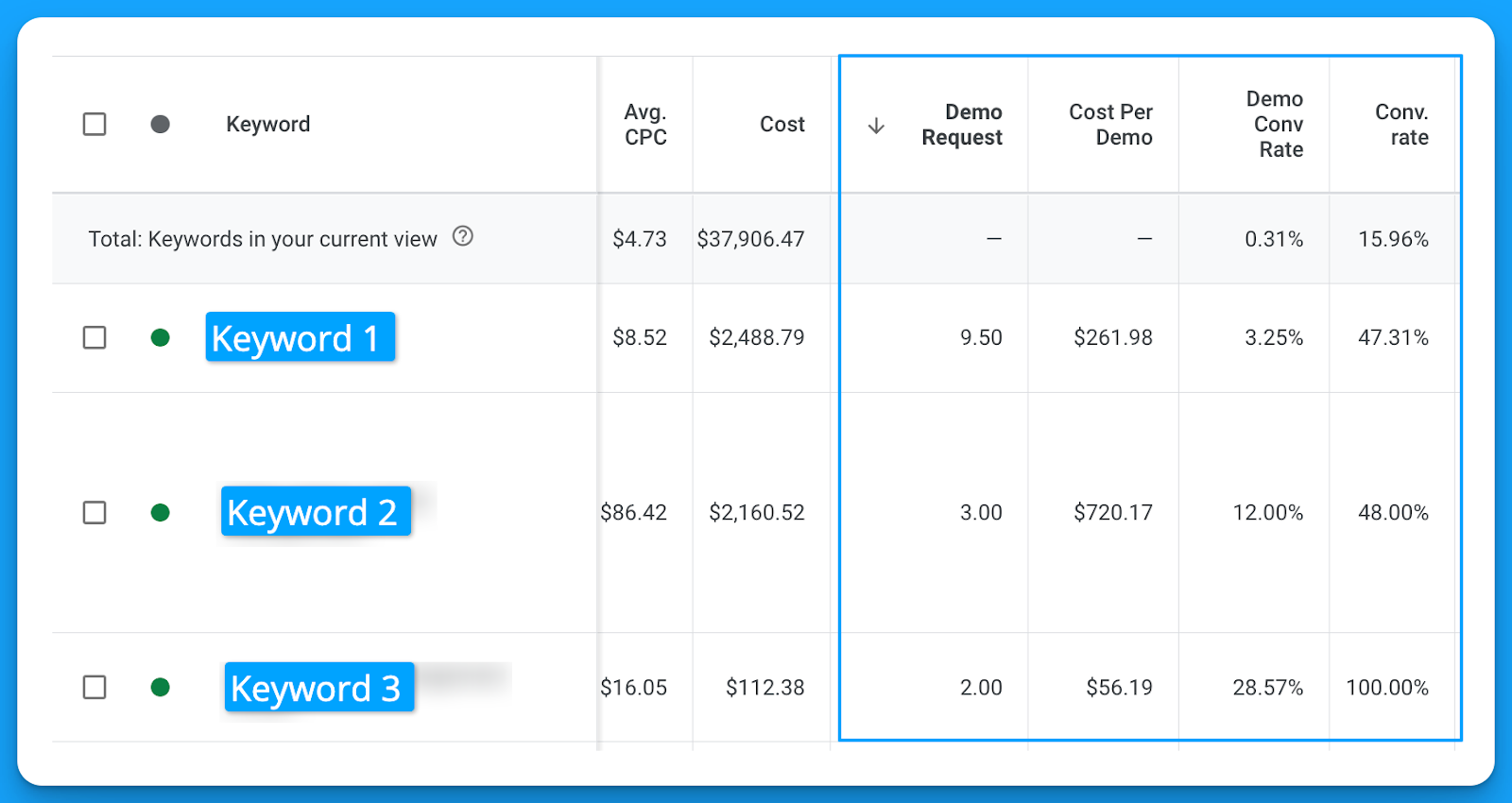
Once you’ve identified some worthwhile keywords it’s time for step 2.
Step 2: Brainstorm your targeted audiences
Google has 5 audience types you can leverage for targeting in your search campaigns.
- Your data = website visitors or contact lists
- In-market = people actively researching a given topic
- Life events = people who’ve accomplished a life milestone (ex: create a business, get married)
- Detailed demographics = industries, company sizes, education level.
- Affinity = people who are interested in a certain topic

You can use a mixture of all these different types of audiences to layer on top of your broad match discovery campaigns.
If you’re dealing with < 500 searches/month for your keywords I recommend clustering a minim of 10-15 audiences on top of your campaigns to help with delivery.
Step 3: Setup a campaign experiment
The safest way you can test broad match discovery is in a 50/50 experiment alongside your top converting phrase match campaign.
You can easily AB test in Google Ads using the campaign experiments feature.
Located under Campaigns > Experiments
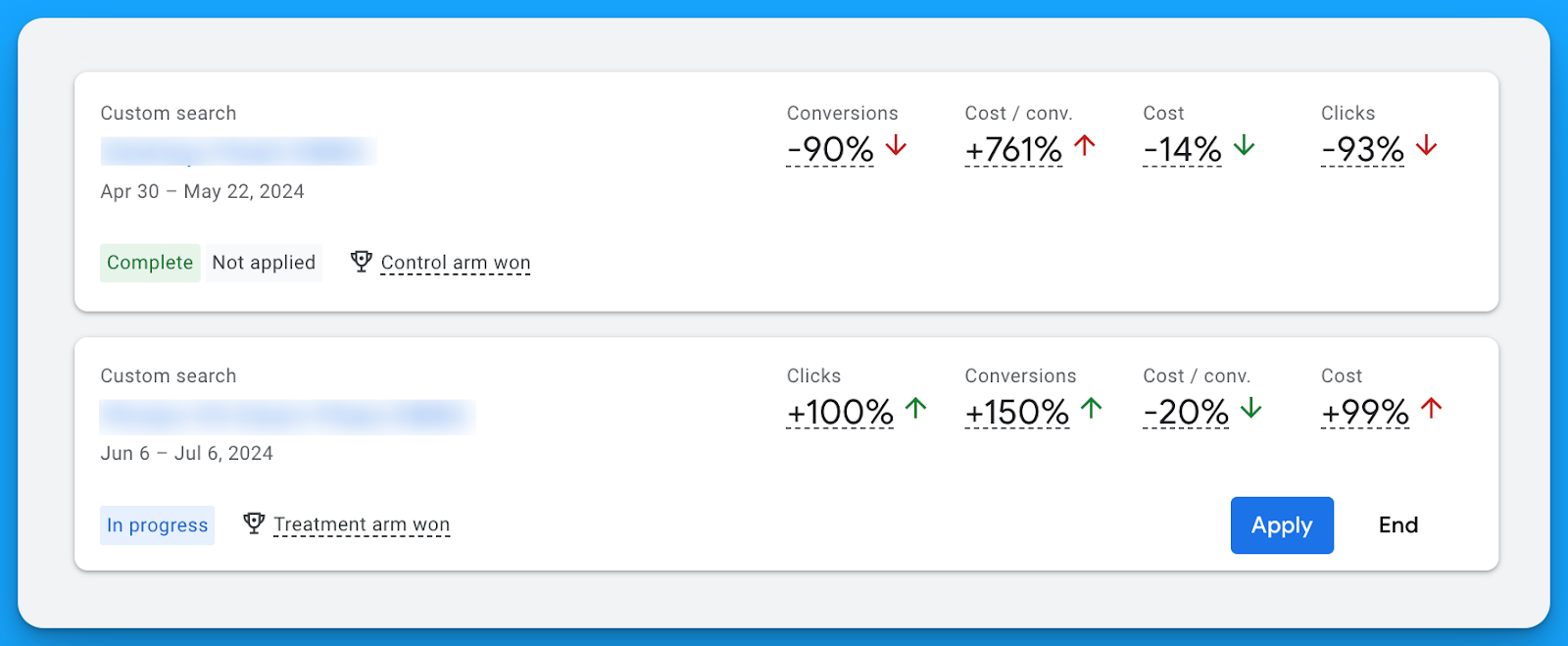
Using this feature build an experiment splitting the traffic by 50% for your original campaign vs the experiment version using broad match AND the targeted audiences you brainstormed in step 2.
Strategy #2: Advertising outside of English
English is the most competitive language in the world with the majority of advertisers.
We’ve seen reductions of up to 70% in our average CPC targeting other languages.
If your company has the resources to sell in multiple languages – take advantage of localization!
Localization campaigns are when you target keywords, write ad copy, and design landing pages that all are in your audience's native language (ex: Spanish, German, Portuguese).
You’ll reap the benefits of lower costs due to less competition.
The downside however with localization is search volume.
If you’re already advertising in English outside of North America and finding success, definitely recommend testing this strategy.
How to implement localized campaigns:
Step 1: Find proven converting phrase match keywords
Review your performance across converting phrase match keywords to identify which you’re going to prioritize testing with broad match discovery.
Don’t rely on “total conversions” make sure you’re viewing performance by keyword based on the custom metrics that matter for your business (ex: Demo, Trial, SQL, SAL, Opp, etc).

Step 2: Brainstorm your targeted languages
Ask your internal team what languages your sales team is able to sell in.
Based on your options make a list of potential languages.
Next, if you’re advertising outside of North America, review the top performing countries and identify their local languages and see if you have the internal resources that can speak that language.
If you can’t sell in this language then this strategy won’t make sense.
Step 3: Hire a local translator
Don’t make the mistake of relying on Google Translate to perform the bulk of your translation.
You’ll want to hire a translator that grew up in the area in which you want to advertise.
For instance, if you’re advertising in Portuguese.
The dialect for Europeans living in Portugal and those living in Brazil is very different.
A local Brazilian can tell if it’s not their dialect just like a native Portuguese.
I recommend hiring locals off Upwork can be as low as $12/hour depending on the language.
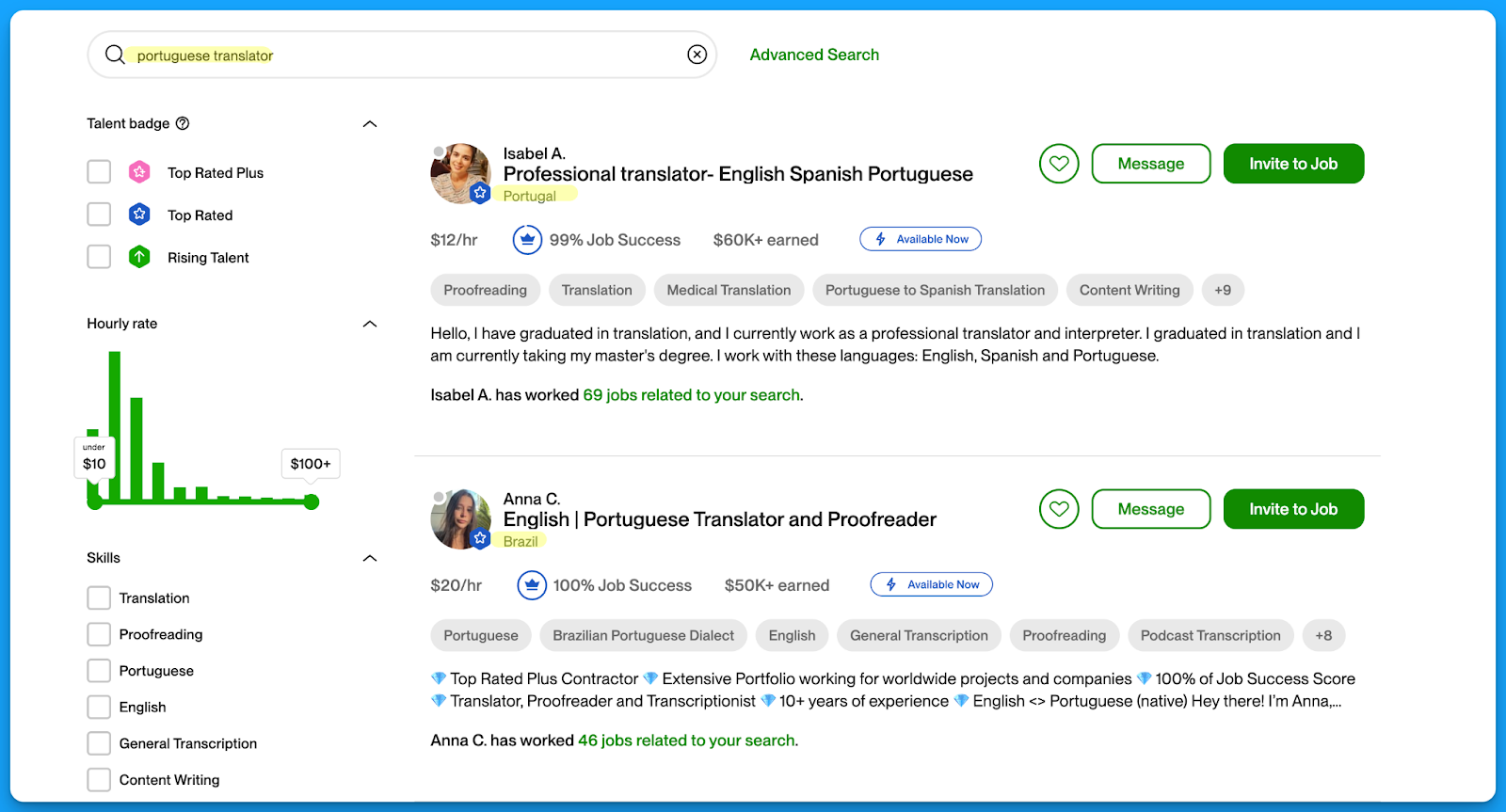
These translations will make a world difference in your ad and landing page copy.
Strategy #3: Industry campaigns
Industry campaigns can be great for coverage and quality.
This is where you’re going to bid on a desired keyword and add a related industry term.
For example, let’s say bidding on the keyword “crm software” here’s how you can modify this keyword to make it industry specific:
- healthcare crm software
- crm software for fintech
- crm software for small businesses
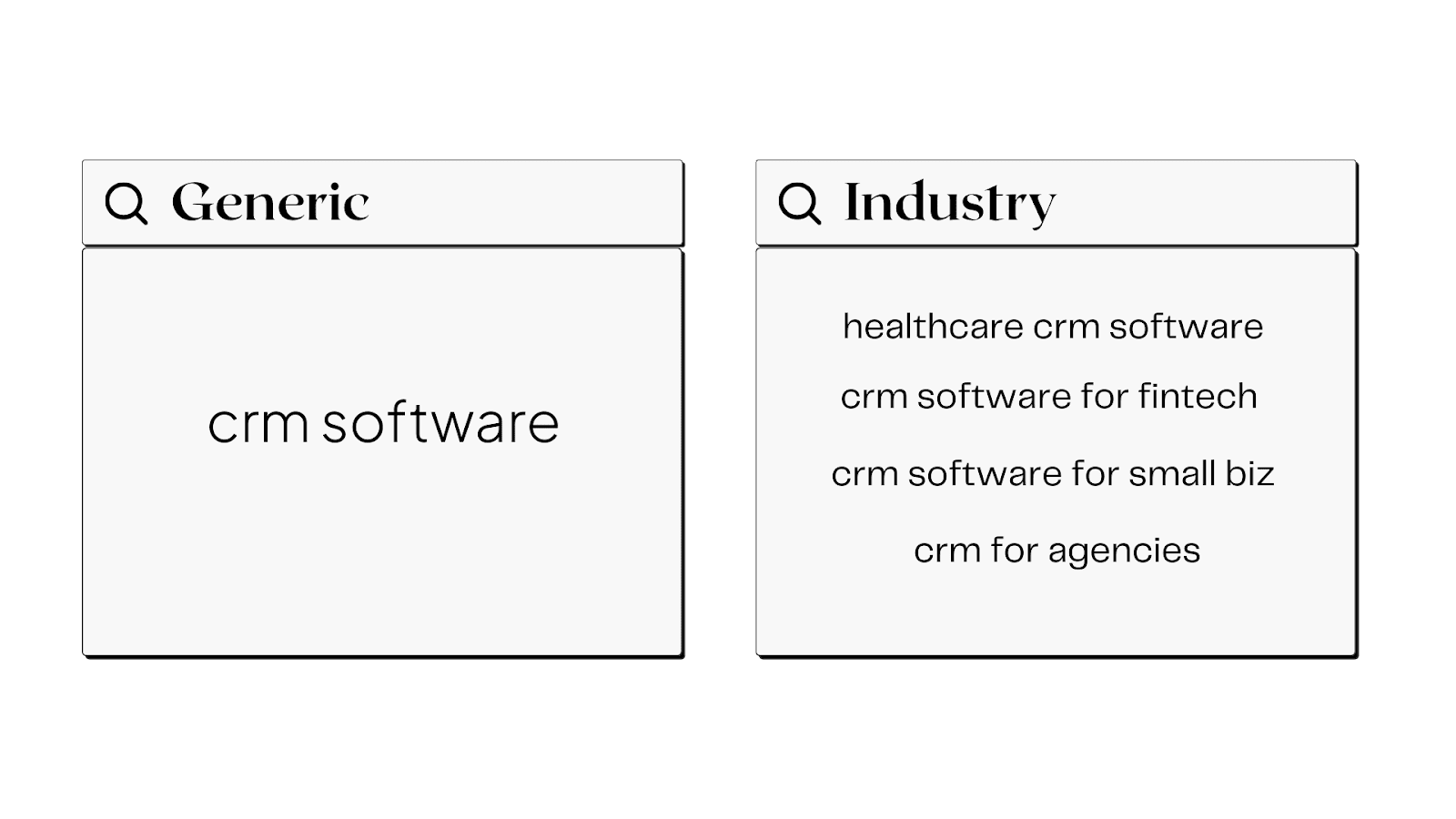
The benefits of industry campaigns:
- Personalized ad copy that can yield greater CTRs
- Higher quality leads due to a more qualified search term
- Lower cost per click prices due to less competition
The downside however is search volume (the constant struggle of Google for SaaS 😅).
How to implement industry campaigns:
Step 1: Find proven converting phrase match keywords
Just like the other strategies we’re going to identify proven keywords first that we can create industry variations for.
Step 2: Brainstorm your target industries
Run a win rate analysis in your CRM and understand which industries have the shortest sales cycles and largest deal sizes? Based on your findings, prioritise the industries in which you want to target.
Step 3: Build and prevent keyword overlap
Once you have your keywords and target industries you’re ready to build your campaigns.
Make sure to add your industry terms as negative keywords in your generic non-brand campaigns.
Otherwise you can have people seeing your generic ads for your industry terms.
Hope you found this article helpful!
Best of luck scaling your Google Ads campaigns for your SaaS.
From Clicks to Conversions: Master Google Ads for B2B 🔥
If you want to become a Google Ads pro, check out our free B2B Google Ads courses, where you'll learn how to launch, optimize, and scale your campaigns to drive pipeline and revenue.

Here's what you'll learn in each course:
⚙️ B2B Google Ads 101 - How to Launch Dangerously Effective Campaigns for Beginners
- The Googleverse: The Game You're Playing & How To Win
- Measurement: How to Make Sure You're Profitable
- Targeting: How to Show Up For the Right Searcher
- Planning: Putting It All Together
🎯 Google Ads 102 - How to Clicks Into Profit
- Visibility: How To Find the Hole Sucking Profits
- Workflows: How to Optimize On a Daily, Weekly, Monthly & Quarterly Basis
- Experimentation: How to Test & Automate Profitability
- Troubleshooting: How To Solve Inevitable Problems
🚀 Google Ads 103 - How to Scale Google Ads For Advanced Advertisers
- Methodology: How to Vertically Scale Google Ads From A-Z
- Campaigns: Scaling Horizontally Through Campaign Themes
- Channels: Scaling Outside of Paid Search
Click Here to Join 1,000+ B2B Marketers Today and start leveling up your advertising skill set.
Takes < 90 seconds to sign up (seriously we timed it 😂)
People Also Ask
How can I effectively measure the success of my Google Ads campaigns for SaaS products?
Utilize key performance indicators (KPIs) such as conversion rates, cost per acquisition (CPA), and return on ad spend (ROAS). Implement tracking tools like Google Analytics to monitor user behavior and campaign performance.
What are the best practices for creating compelling ad copy that resonates with my target audience?
Focus on highlighting unique selling propositions (USPs), addressing customer pain points, and including clear calls-to-action (CTAs). A/B testing different ad variations can help determine what resonates most with your audience.
How can I optimize my landing pages to improve conversion rates from Google Ads traffic?
Ensure landing pages are relevant to the ad content, load quickly, and have a clear, concise design. Incorporate strong CTAs and minimize distractions to guide users toward the desired action.
What role does keyword research play in the success of Google Ads for SaaS, and how should I approach it?
Keyword research is crucial for targeting the right audience. Use tools like Google Keyword Planner to identify high-intent keywords relevant to your SaaS product, and consider long-tail keywords to capture more specific search queries.



%20-%20new%20v2.png)

































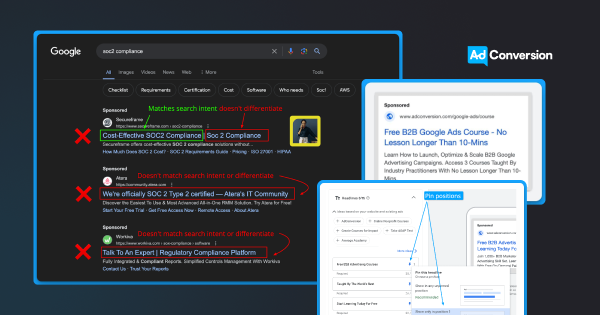
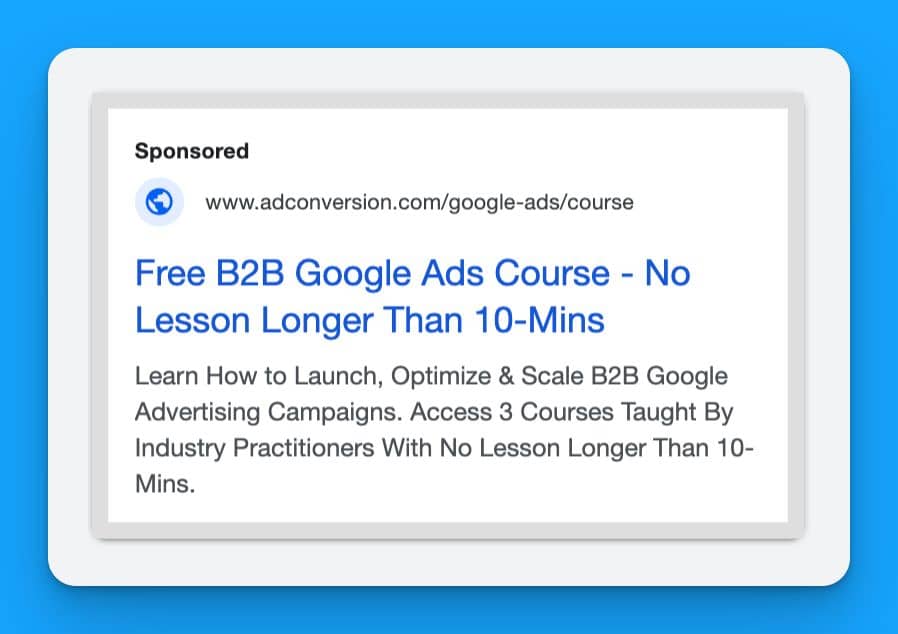

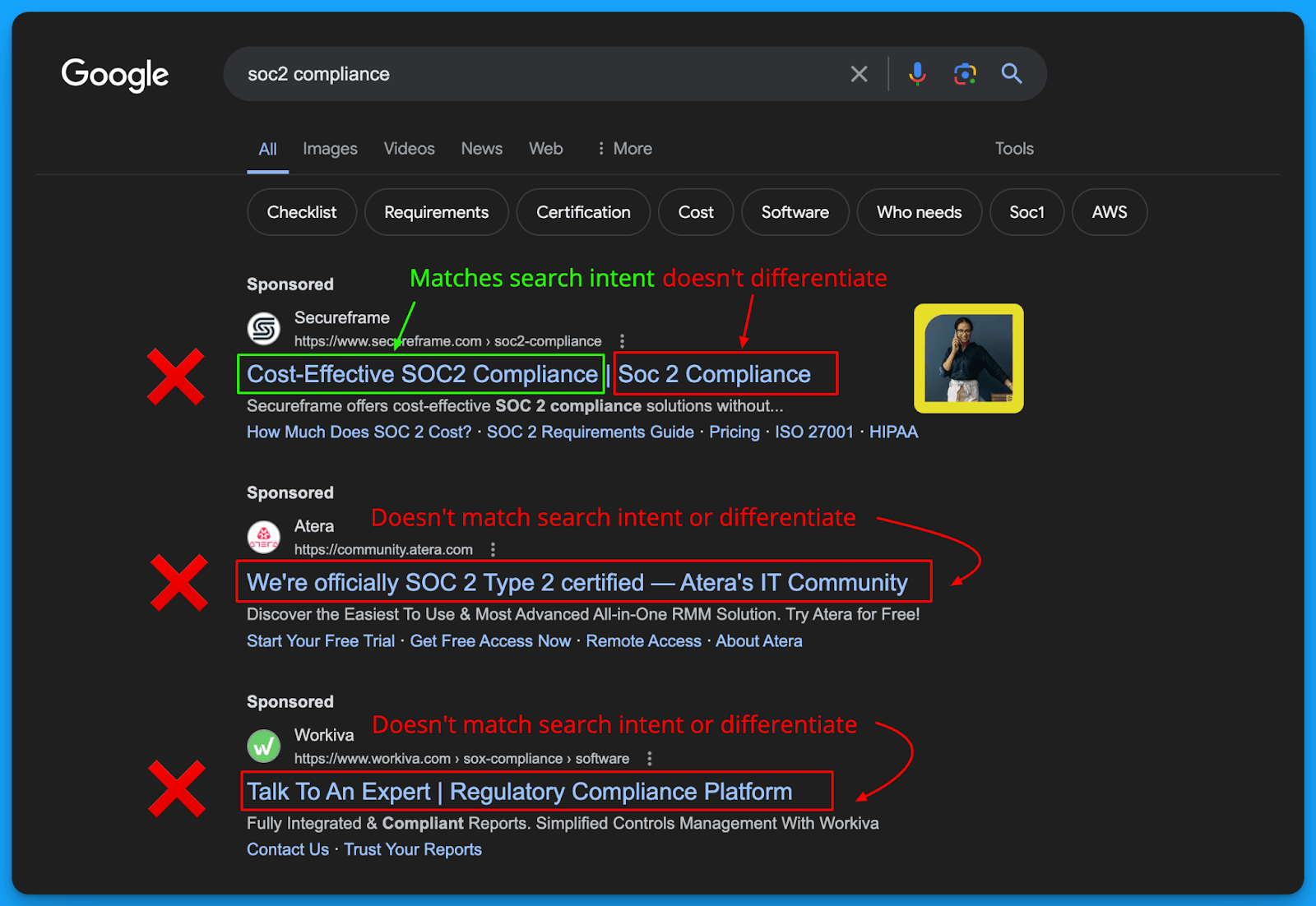
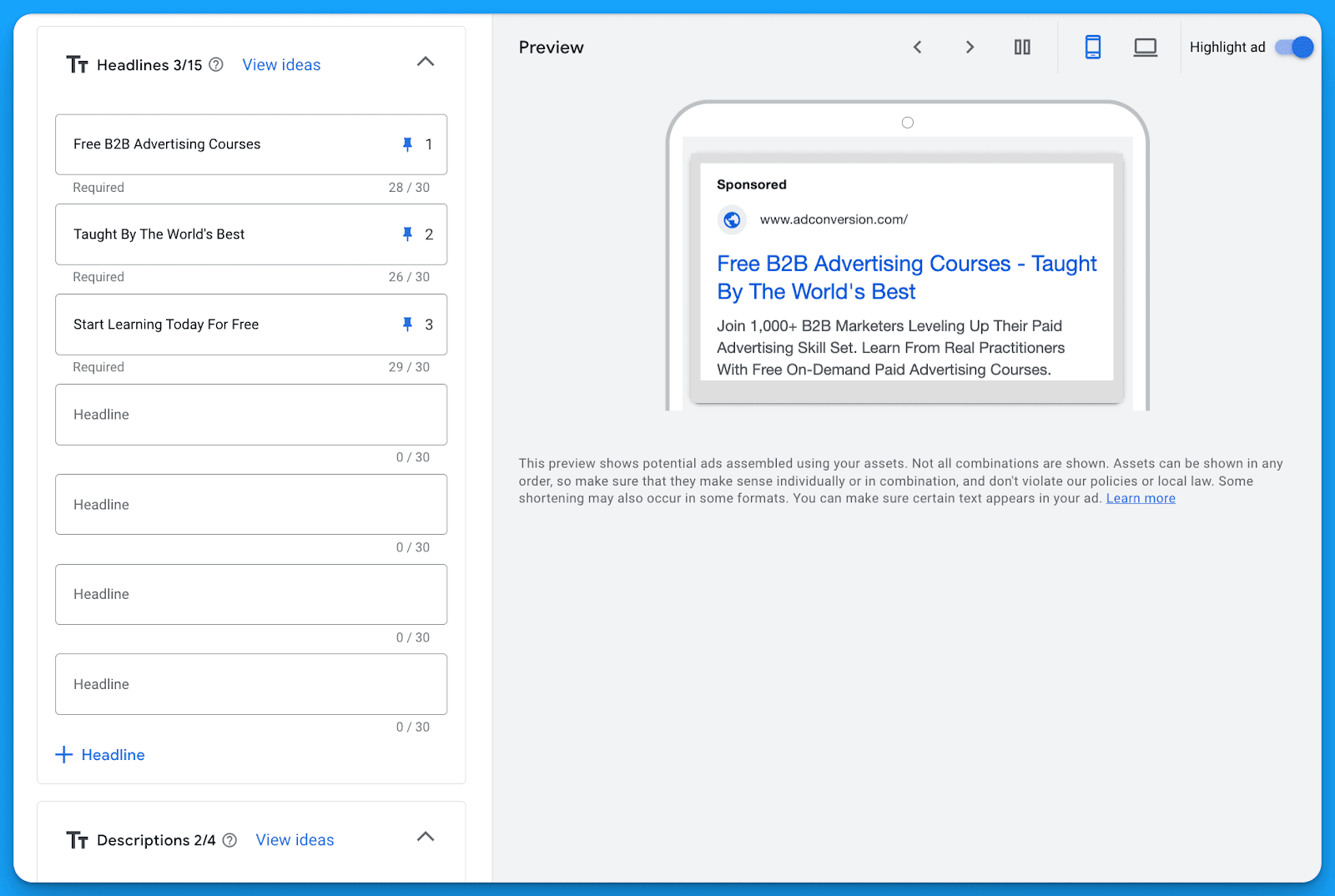
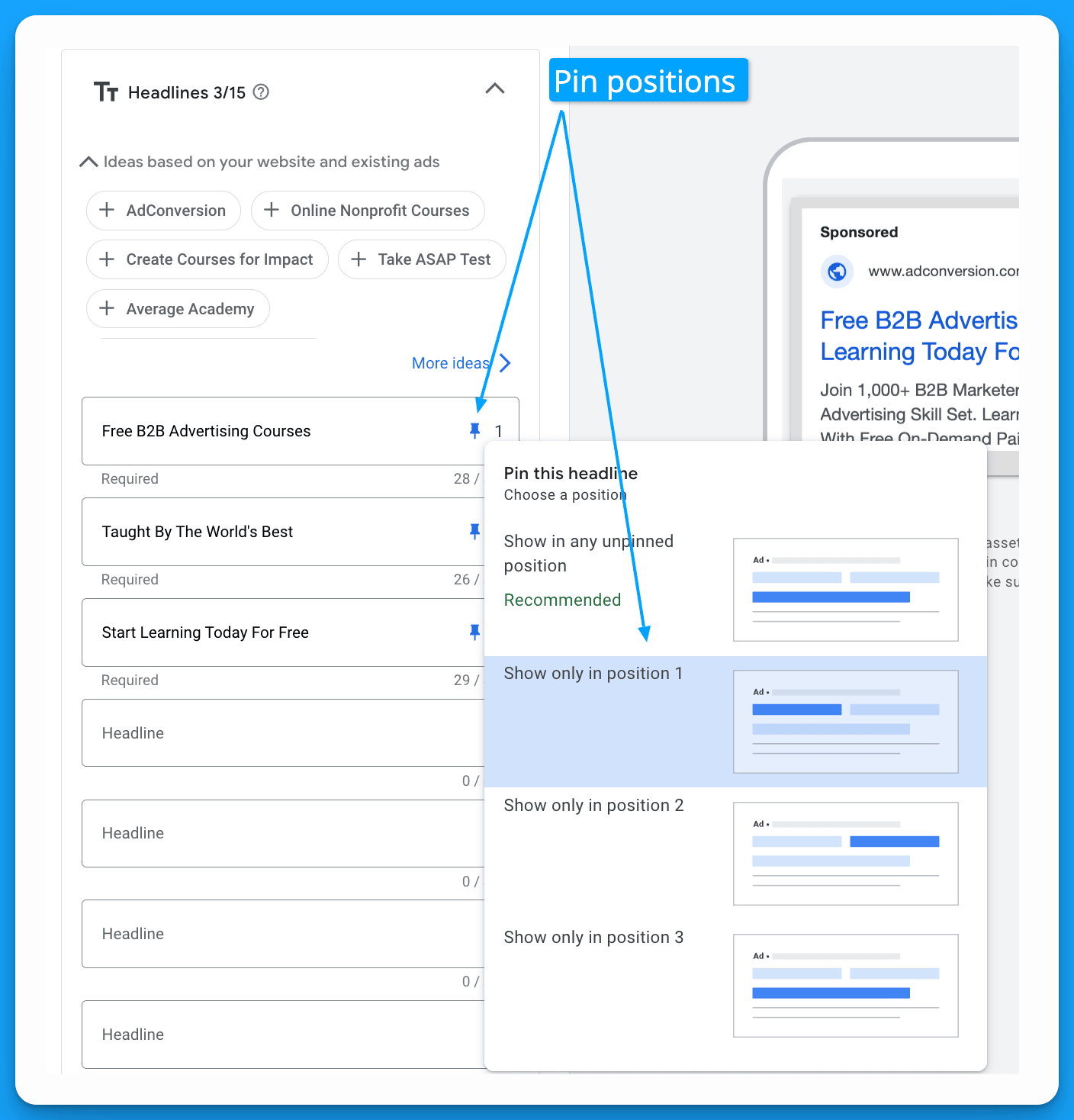



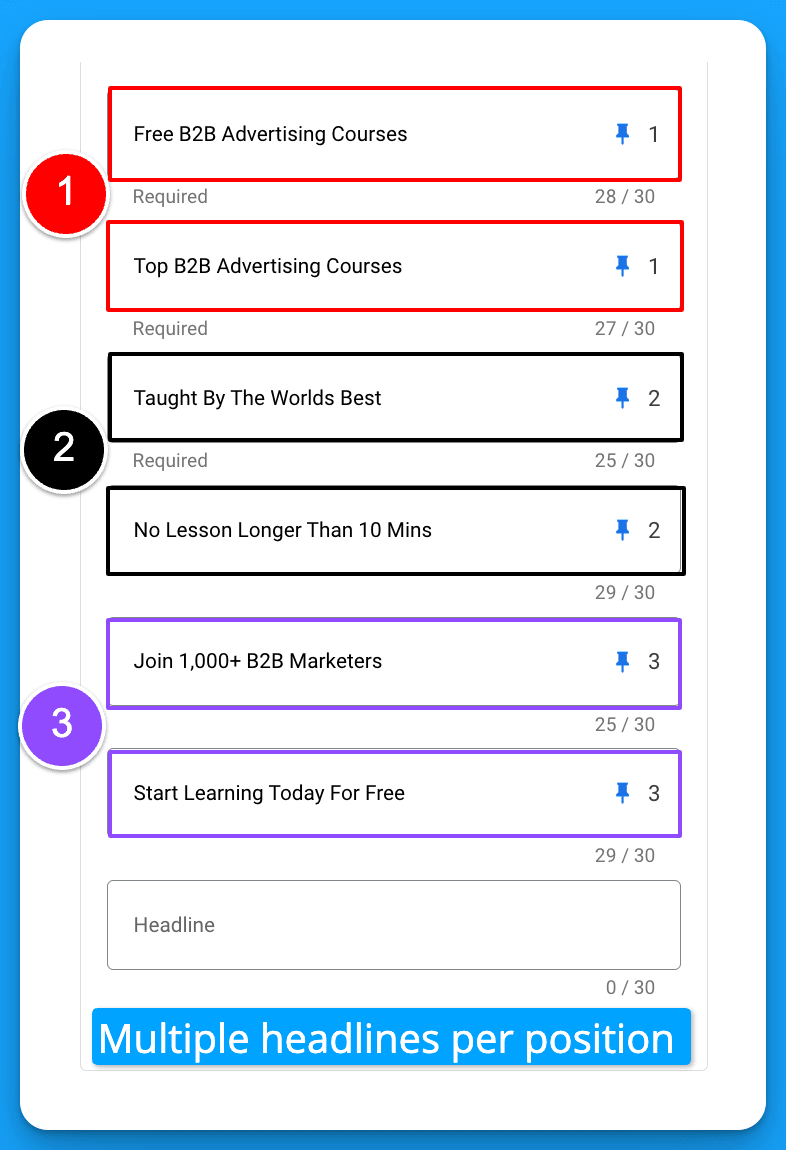
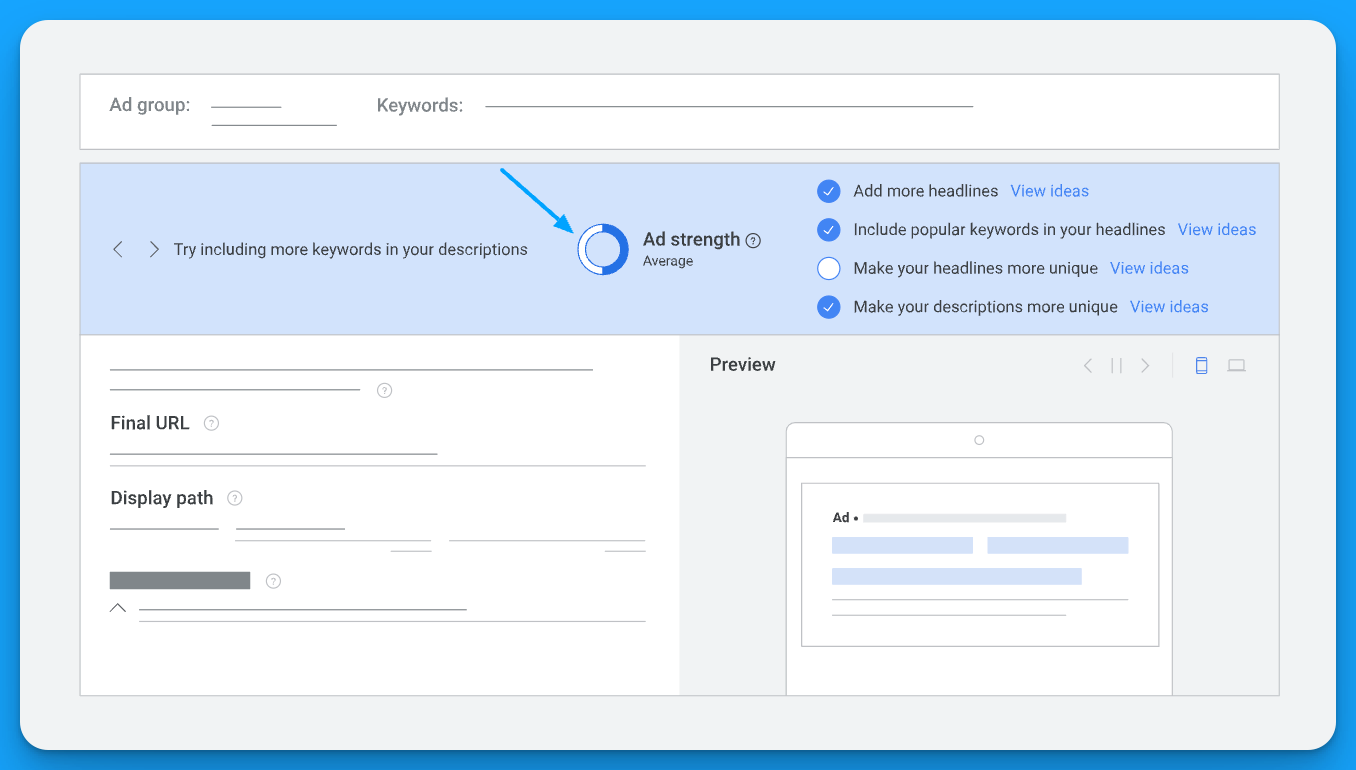

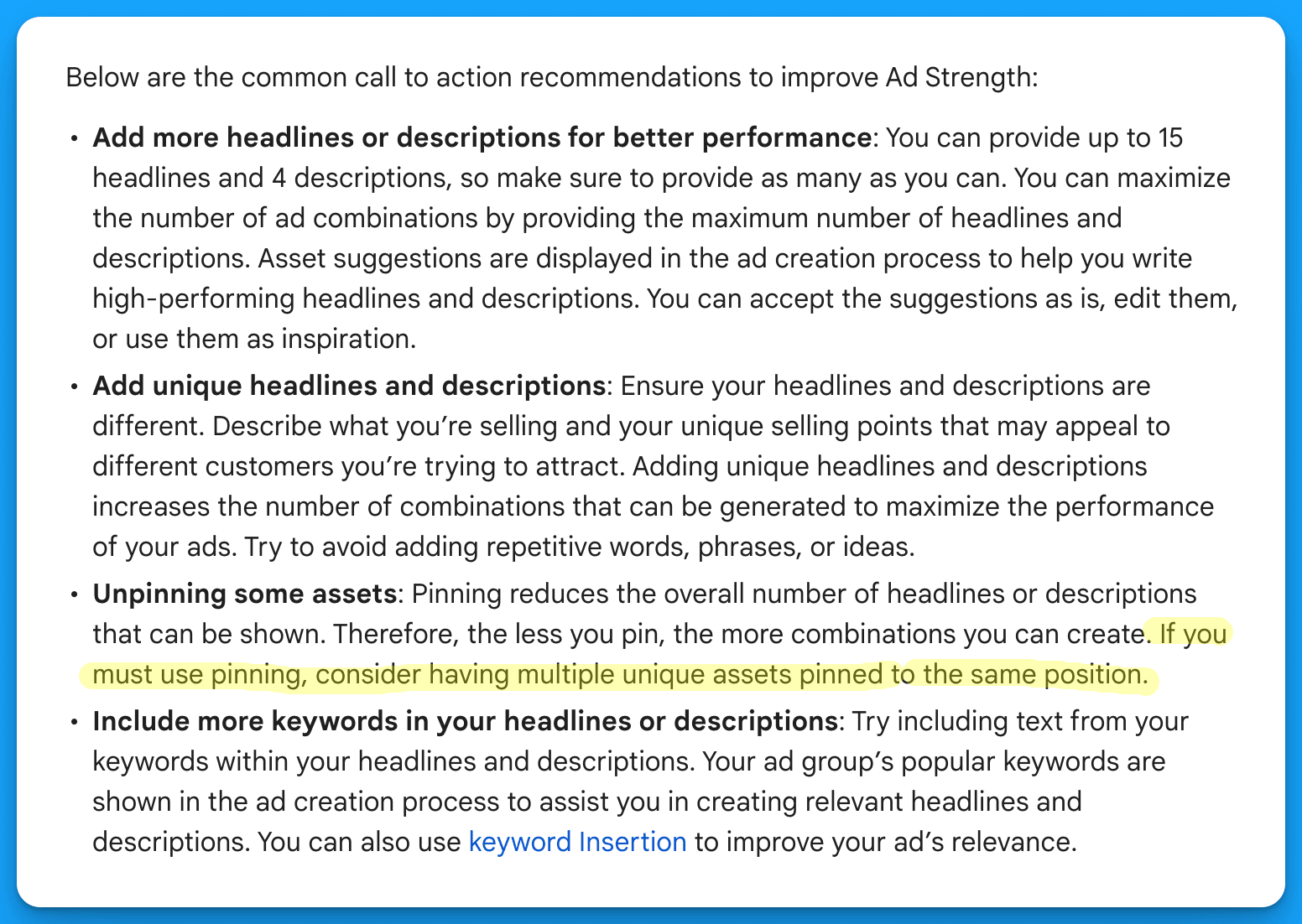
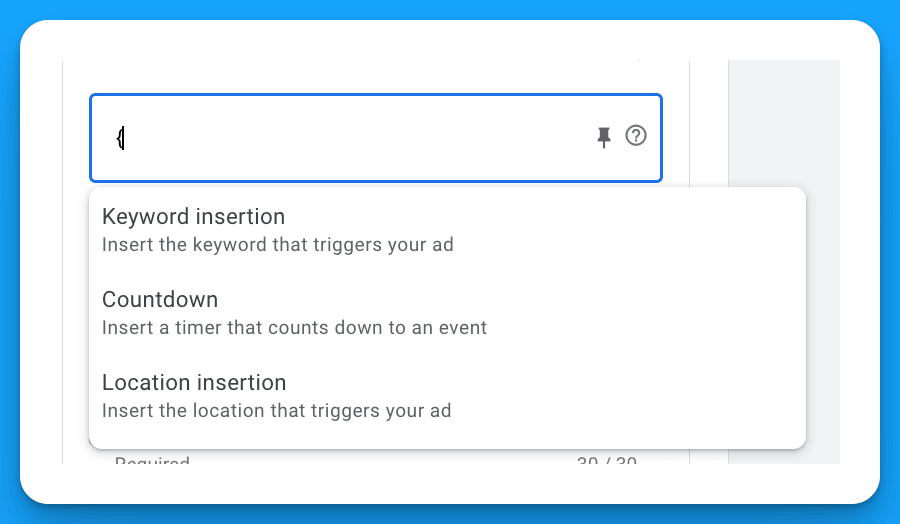



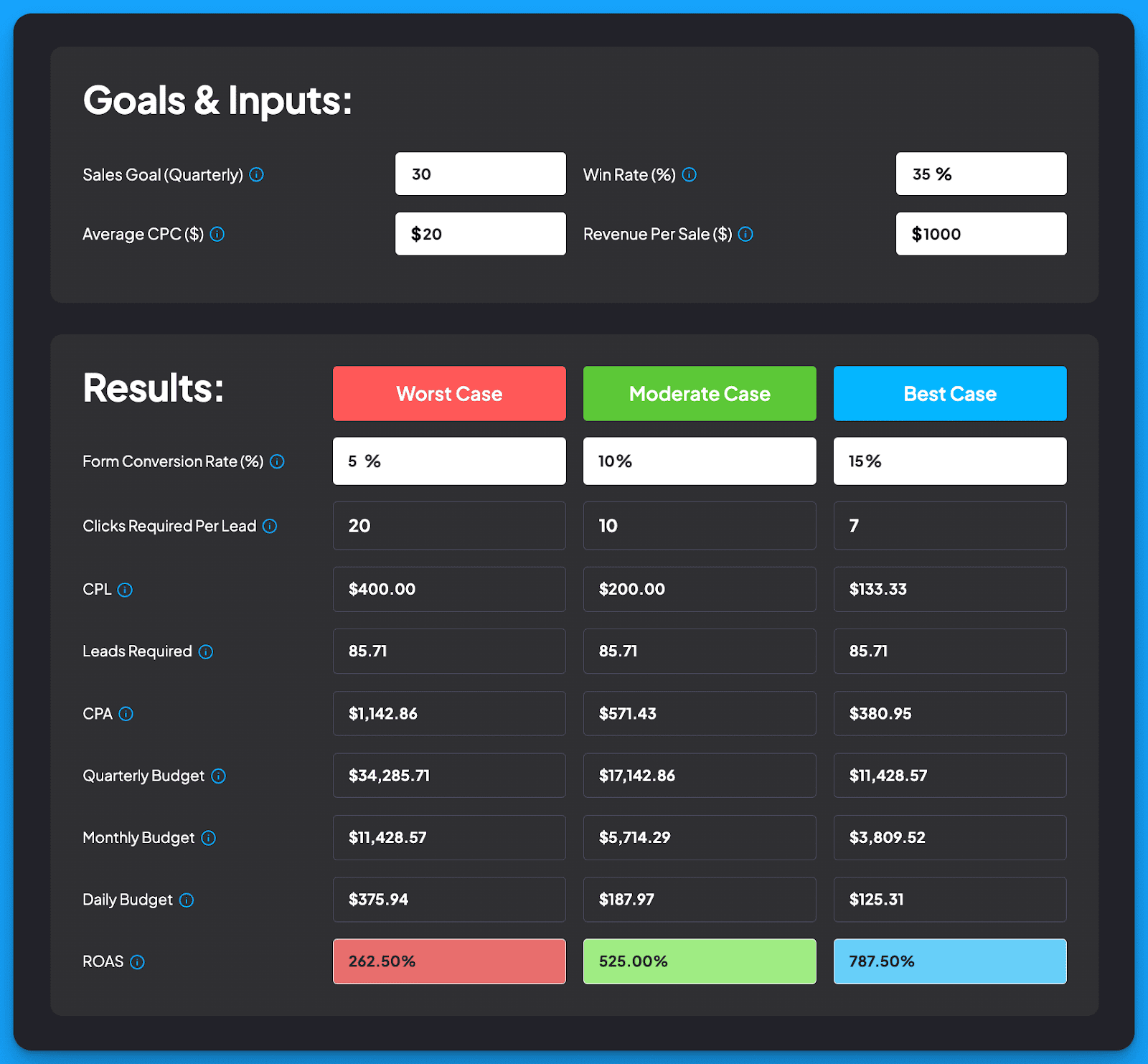
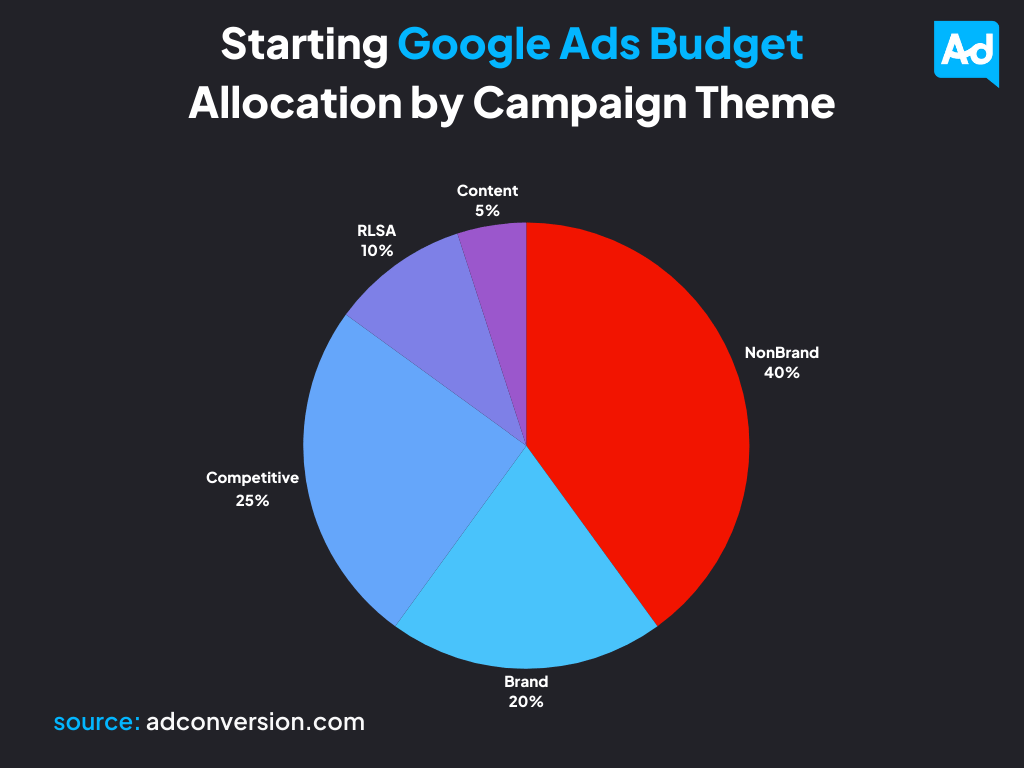




















.png)









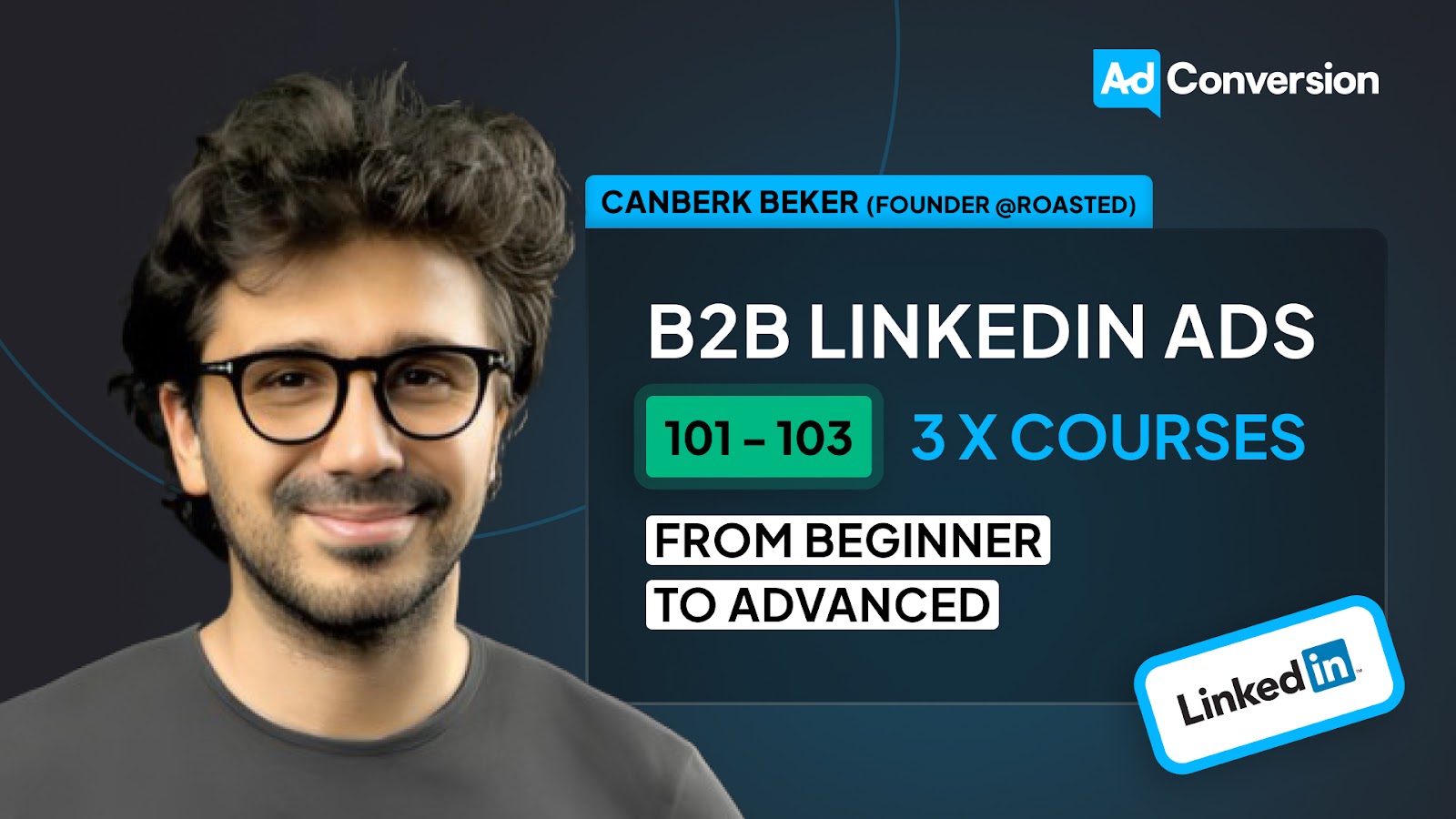

.png)

